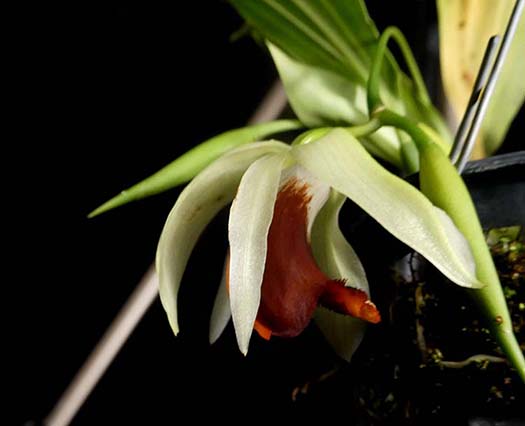August 2023
From Kurt Shanebeck:
|
|
Outdoors coastal, north of Los Angeles: |
|
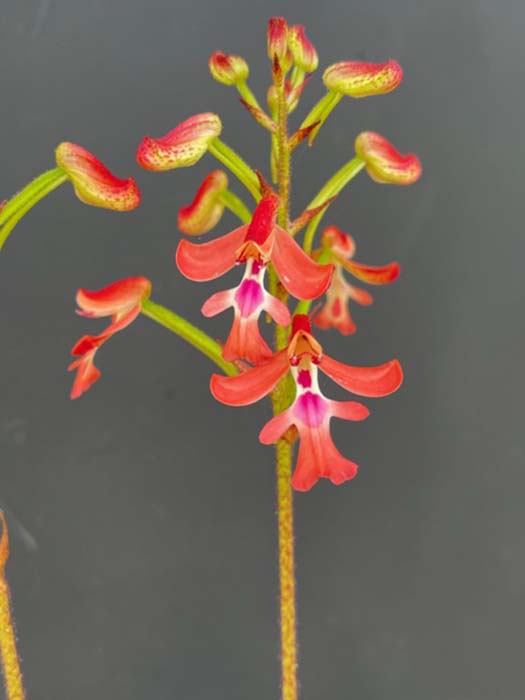
Cynorkis gibbosaTerrestrial species from Madagascar with beautiful spotted leaves and distinct flowers. Growing potted in moss with bright light. |
|
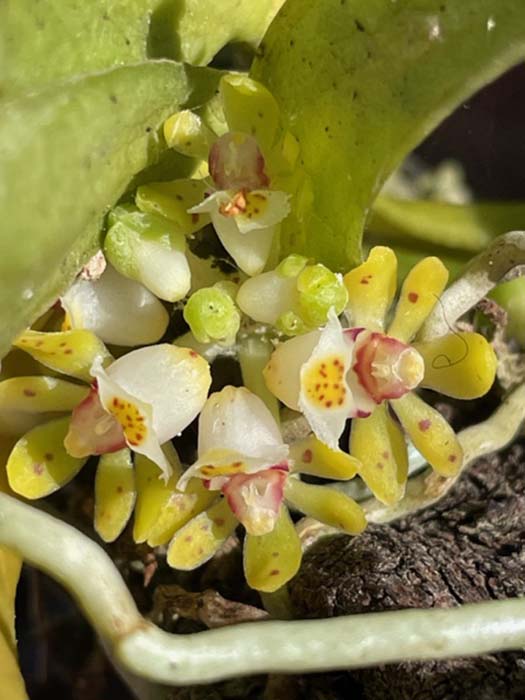
Gastrochilus somaiSmall plant native to Taiwan. Growing mounted and shady. |

Scuticaria hadweniiSouth American species with stiff pencil-like leaves. Growing mounted, shady and moist. |
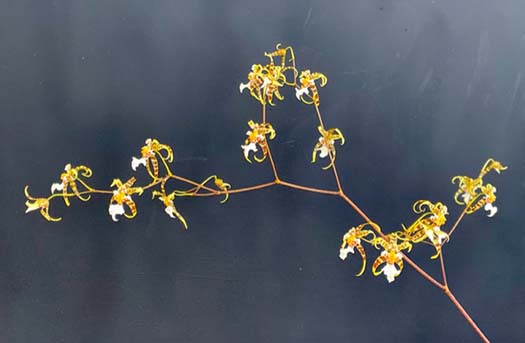
Miltonia phymatochilaNative to Brazil. Growing potted and bright. |
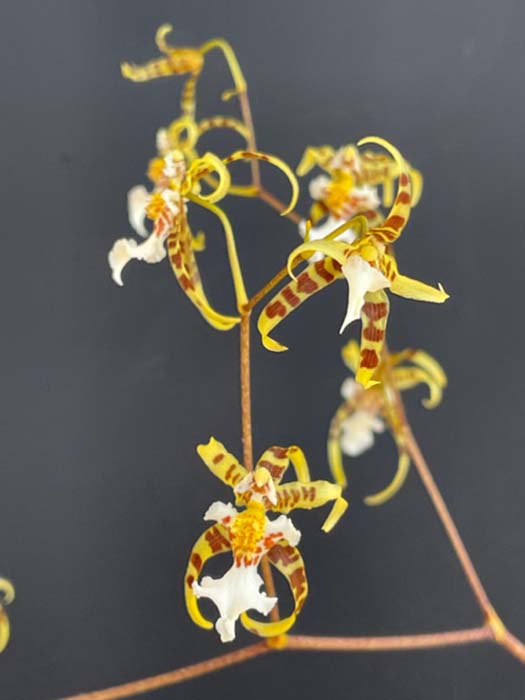 |

Mystacidium capenseEpiphyte from South Africa growing mounted and shady. |
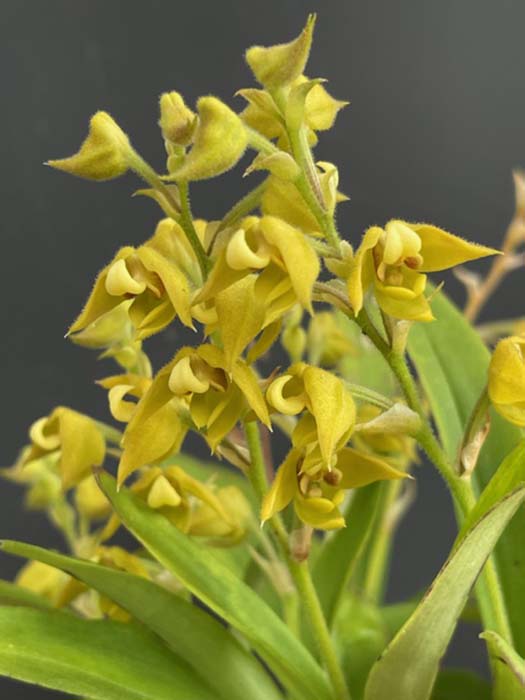
Polystachya zambesiacaFrom Southern Africa where is grows as an epiphyte or terrestrial species. Growing potted with bright light. |
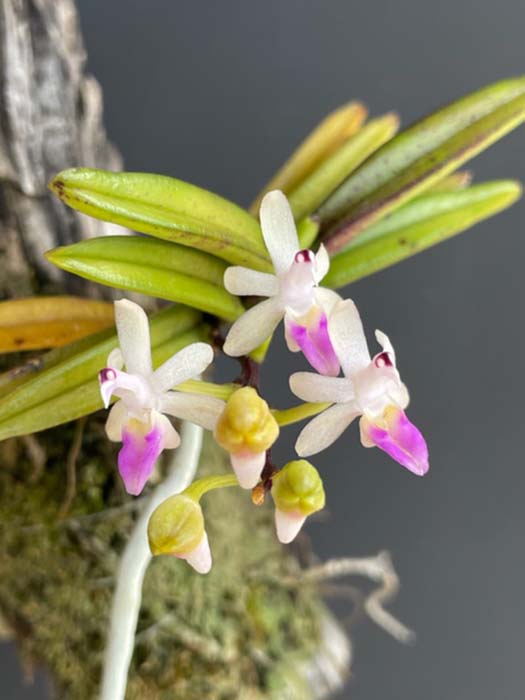
Stereochilus dalatensisVandaceous species native to China and Vietnam. Flowers resemble birds in flight. Growing mounted and bright. |

Trichoceros antenniferInteresting bug-like flower. Native to South American cloud forests. Growing mounted on tree fern with bright light. |
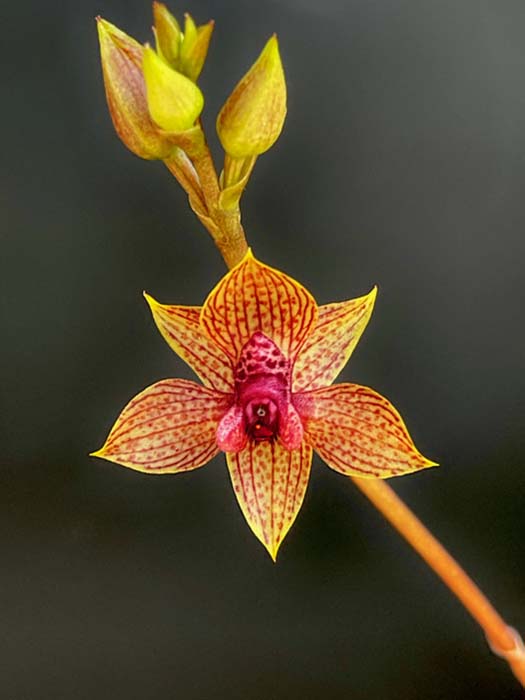
Trichoceros onaensisBeautiful species from Ecuador. Growing mounted and bright. |
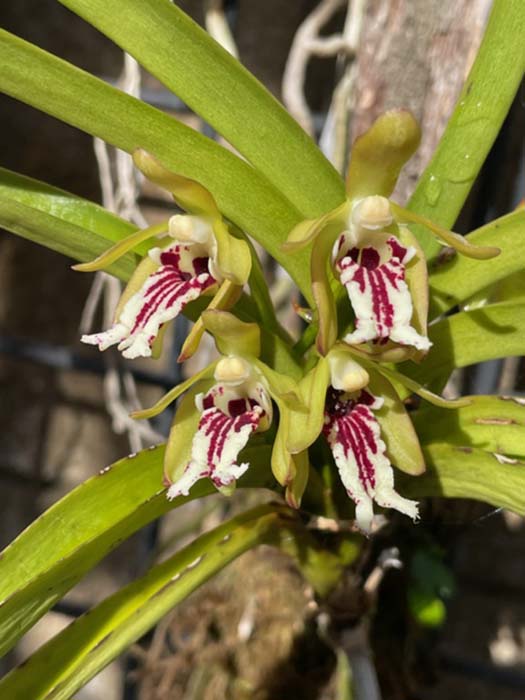
Vanda cristataNative to India Nepal and Tibet. Growing mounted and bright. |
From Chris Ehrler:
|
|
Coastal, California Central Coast |
|
Dracula cordobae 'Bartholomew' HCC/AOSIs an epiphyte growing in cloud forests in Ecuador at elevations of 750 to 1,000 meters in elevation. Is considered a warm growing species but is growing well in a cool greenhouse. Growing mounted to a piece of cedar board with some sphagnum moss on the roots. As with many of the Draculas, the spikes grow downward from the growths so it needs to be either mounted or grown in a mesh pot. |
|
Lycaste aromaticaGrowing in Mexico, Guatemala, Nicaragua, Honduras and El Salvador as a cool to warm epiphyte, lithophyte and sometimes terrestrially at elevations of 500 to 2,000 meters. This orchid is growing outside in a plastic pot filled with a mixture of bark and lava rock. It has a great cinnamon fragrance. |
|
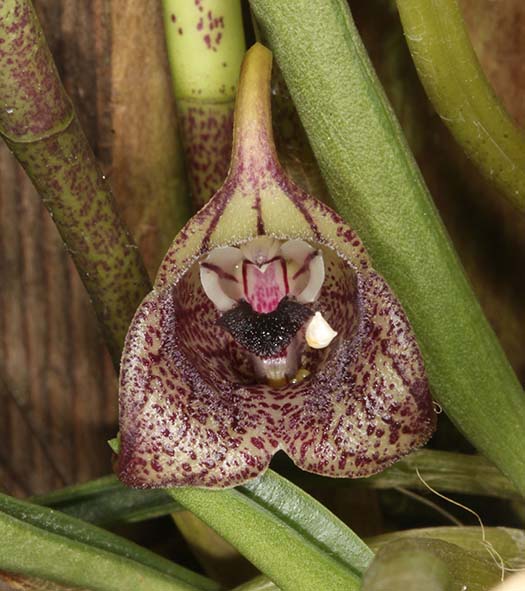
Masdevallia civilisA cool growing epiphyte, terrestrial, or lithophyte found in cloud forests in Colombia, Venezuela, Ecuador and Peru at elevations of 2,000 to 3,000 meters. This orchid is growing outside in a shaded location and is attached to a piece of cedar wood with sphagnum moss on the roots. |
|
Masdevallia coccinea 'San Bars Red Flaire'This is one of the many color forms of this species. This cold growing species is native to Colombia at elevations of 2400 to 3000 meters. This plant is growing well both mounted and in a clay pot filled with a mixture of bark and lava rock with both placed on the north side of the house where they get diffuse light and generally stay cool. |
|
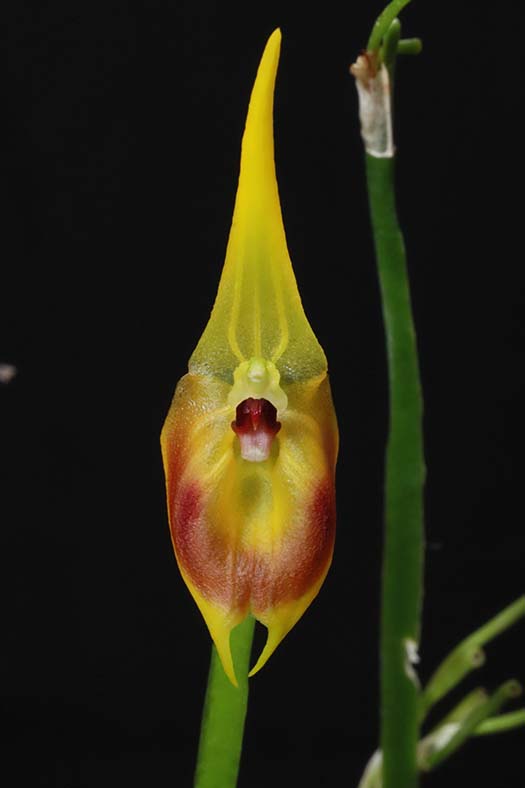 |
 |
Masdevallia pinnochioFound in Ecuador at elevations of 1300 to 1500 meters as a cool growing epiphyte. Will continue to bloom on each spike if you keep it happy. Growing in a bark and perlite mixture in a plastic pot placed in a cool greenhouse. |
|
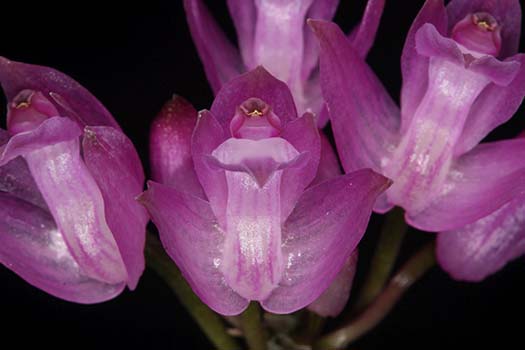 |
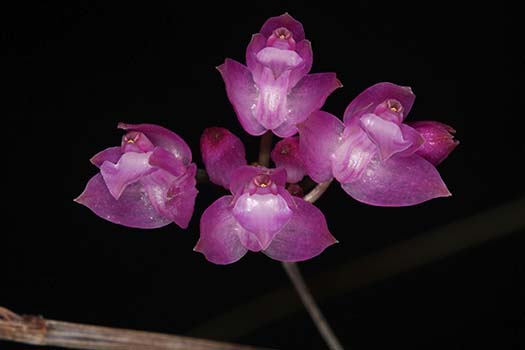 |
Nageliella purpureaA cool to warm growing epiphyte found from sea level to 1,500 meters in Mexico, Guatemala, El Salvador and Honduras. There are only two species in this genus. Growing in a cool greenhouse mounted to a piece of wood with some sphagnum moss on the roots. Even though the spikes might look dry they can continue to send out new flowers so do not cut the old spikes off too soon. |
|
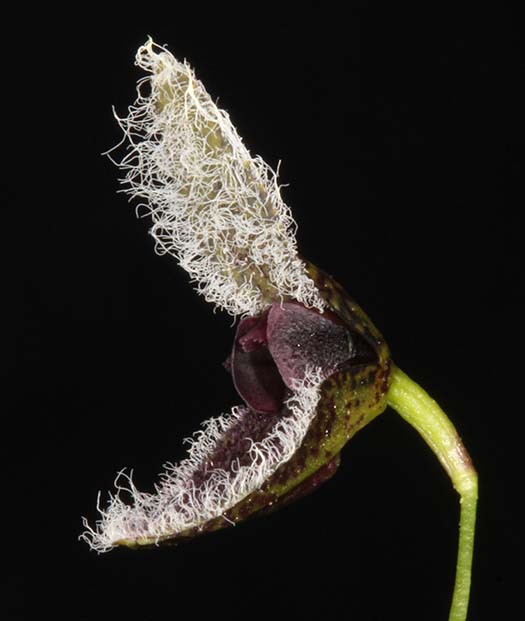
Pleurothallis flexuosaA hot to cool growing epiphyte found at elevations of 350 to 1,900 meters in Venezuela, Colombia, Ecuador, Peru, and Bolivia. Growing in a mesh pot filled with a mixture of bark and lava rock which is in a cool greenhouse. |
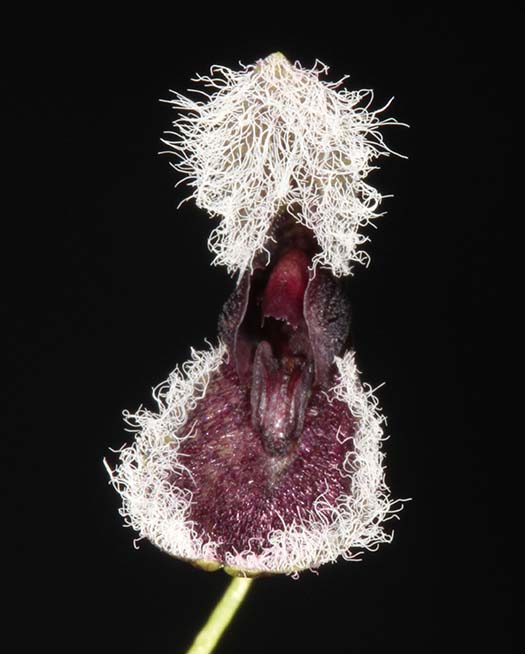 |
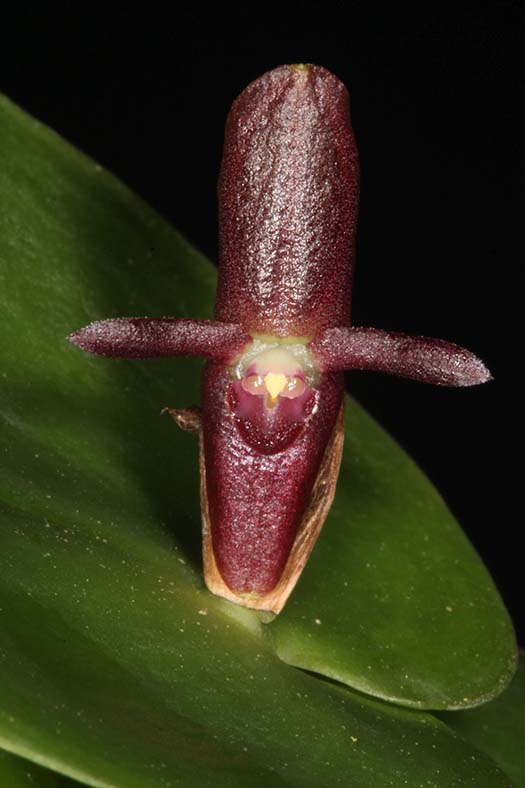
Pleurothallis phyllocardiaA warm to cool growing epiphyte found in Costa Rica and Panama at elevations of 1,300 to 2,500 meters. Growing in a cool greenhouse in a plastic pot filled with a mixture of bark and lava rock. |
 |
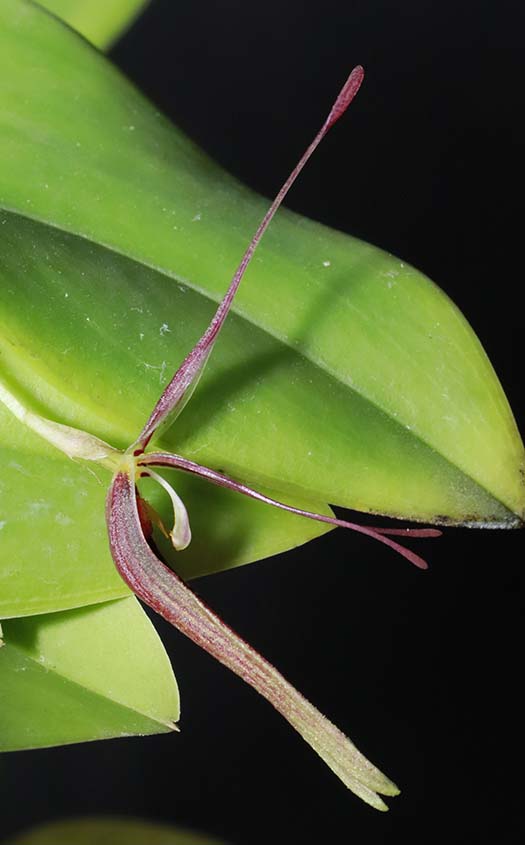
Restrepia brachypus 'Red Stripe'Grows at 1180 to 3,200 meters as a cool to cold growing epiphyte in Venezuela, Colombia, Ecuador, Peru and Bolivia. Growing in a cool greenhouse mounted to a piece of wood with some sphagnum moss on the roots. |
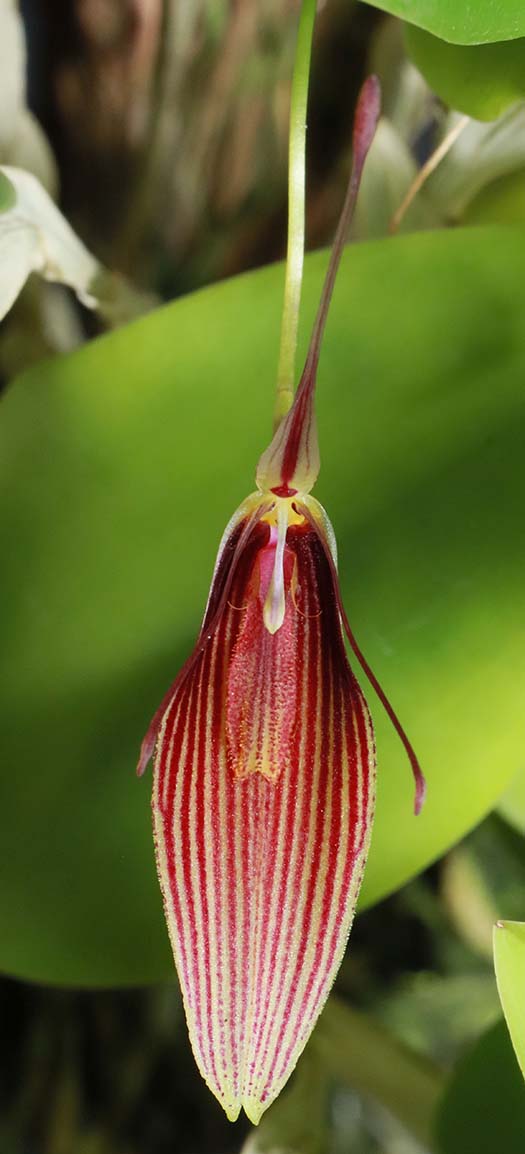 |

Restrepia dodsoniiA cool growing epiphyte found in Ecuador at elevations between 1,060 to 1,700 meters. Growing in a cool greenhouse in a clay pot filled with sphagnum moss. |
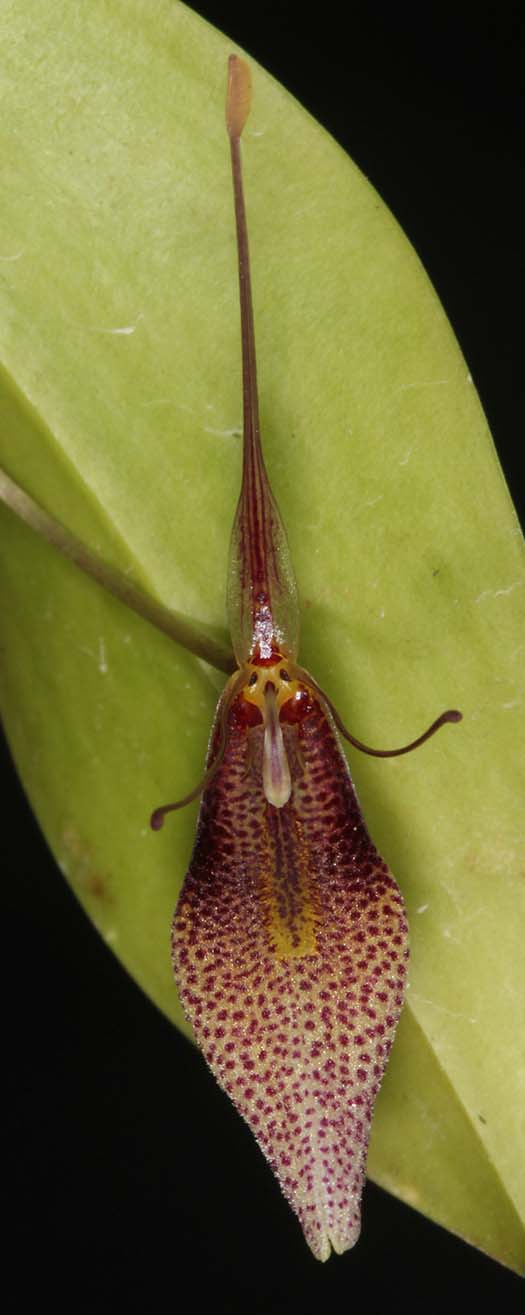 |
 front cropped.jpg)
Restrepia guttulataGrows in Colombia, Ecuador, Peru and Venezuela elevations between 1,700 to 3,000 meters as a cold to cool growing epiphyte. This orchid was purchased from Dan Newman at Hanging Gardens and he said this was a division of a plant collected many years ago in Atillo, Ecuador. Growing in a cool greenhouse in a clay pot filled with sphagnum moss. |
 side cropped.jpg) |
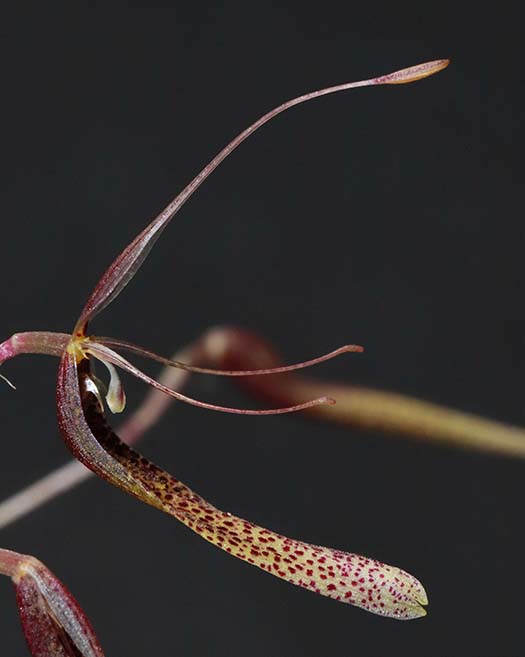
Restrepia tsubotaeGrows at 600meters in hundi conditions in Colombia. Is considered to be a warm growing species but so far has grown and bloom in a cool greenhouse. Growing in a clay pot filled with sphagnum moss. |
 |
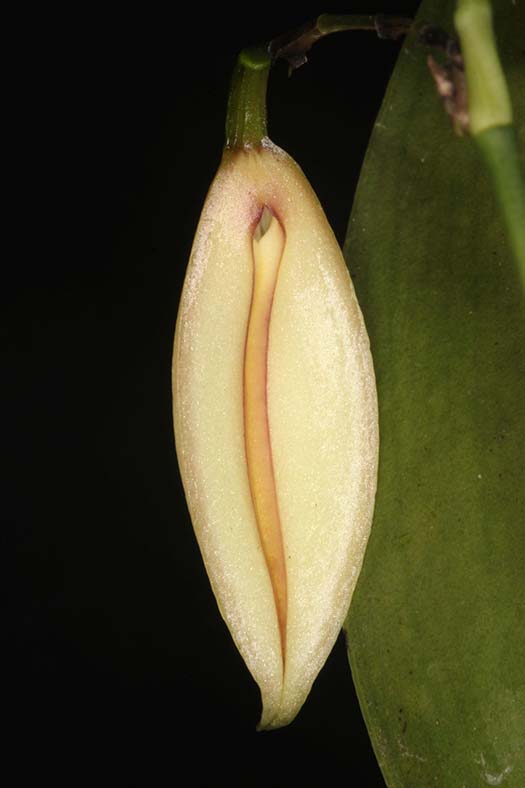 |
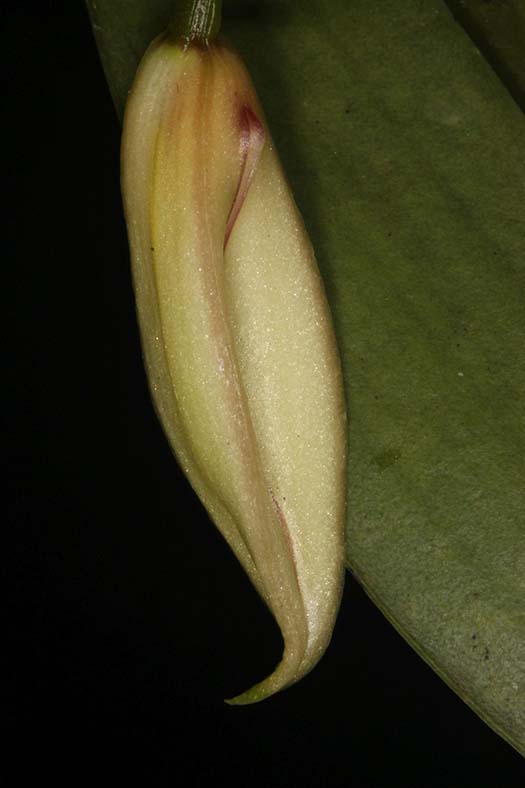 |
Zootrophion aguirreiFound in Colombia but details about its location at not provided in orchidspecies.com. The flowers of this species shown on the website have small purple spots which this one does not have. I am not sure how the pollinator is able to pollinate this flower as there does not appear to be much of an opening. Growing in a cool greenhouse in a plastic pot filled with a mixture of bark and lava rock. |
|
From James Lockman:
|
|
All plants grown outside, inland San Diego County, on a protected patio with 40% shade or more.
|
|
Dendrobium bensoniaeFound at mid-elevations (2,000-5,000 ft) from Assam to Thailand, this cane type species prefers cool and mostly dry conditions in winter. This one is a fragrant jewel. |
Dendrobium amabileFrom Hainan China to Vietnam at about 4,000 ft elevation. |
Dendrobium farmeriWarm growing from southeast Asia needing dry cool winter |
Dichaea glaucaFound throughout the coffee producing areas of the Caribbean, Mexico, and Central America, with unusually glaucous, distichous leaves and numerous fragrant flowers. Becomes an attractive specimen plant. |
Lycaste cochleataFound from Mexico through Central America growing at low to mid elevations up to 3,500 feet. In seasonally dry forests. |
Lycaste x gorganiiFound as a natural hybrid between Lycaste aromatica and Lycaste deppei in Mexico and Guatemala. Name accepted by Kew. |
Miltonia spectabilis4 " flowers on this Brazilian species found at 2,500 ft elevation. In the warm coastal valley where I grow, this Miltonia species is an easy one. |
Myrmecophila tibicinisFormerly Schomburgkia. A very large grower from Mexico to Columbia/Venezuela, found in similar habitats as Laelia anceps and related species (dry/deciduous forests, dry cool season, very bright light). I grow mine in 3/4" rinsed gravel with chunks of mesquite charcoal and frequent feeding during the growing season. The genus is known for its mutualistic relationship with stinging ants! |
Prosthechea mariaeSyn: Encyclia mariae. A warm to cool growing, medium sized, pendant epiphyte that0 is found at altitudes of 3,200-4,00 ft in dry oak forests in NW Mexico only, is best mounted on wood, and blooms in spring and summer with fragrant flowers. Pictured is a larger flowered form. It is a semi-deciduous plant that requires a dry winter rest, moderate light and is best mounted on wood or tree fern. |
Vanda garayisyn: Ascocentrum garayi. Described as "wonderfully compact," this very slow growing species enjoys very bright light and warmth, though it has grown well for me with minimal winter protection. I was happy to learn that its stippled foliage is in response to the preferred high light conditions, and not the result of my cooler winter temperatures. |
From Scott McGregor:All orchids grown outdoors, coastal southern California |
|
Angraecum compactumA great summer-blooming Angraecum species. True to its name, stays compact and is slow growing, but large flowers for the plant size. |
|
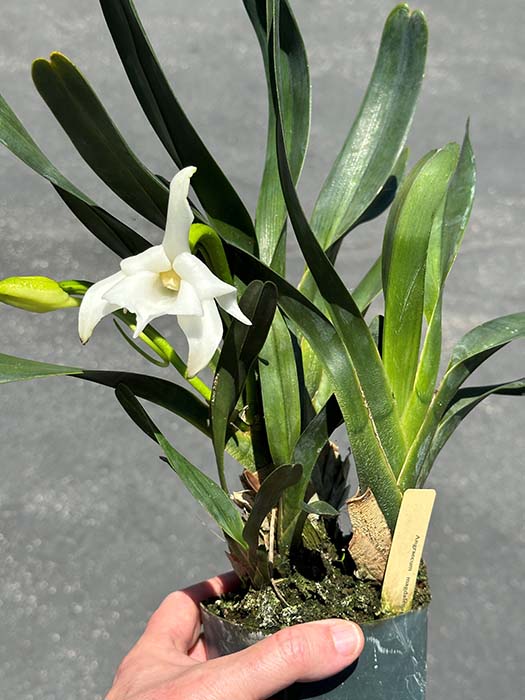 |
|
Angraecum magdalenaeA great medium-sized Angraecum species—slow growing but stays compact and can turn into a specimen plant in the same 3” pot and media for 5-10 years. Flowers are strongly clove-scented at night. |
|
Angraecum didieri |
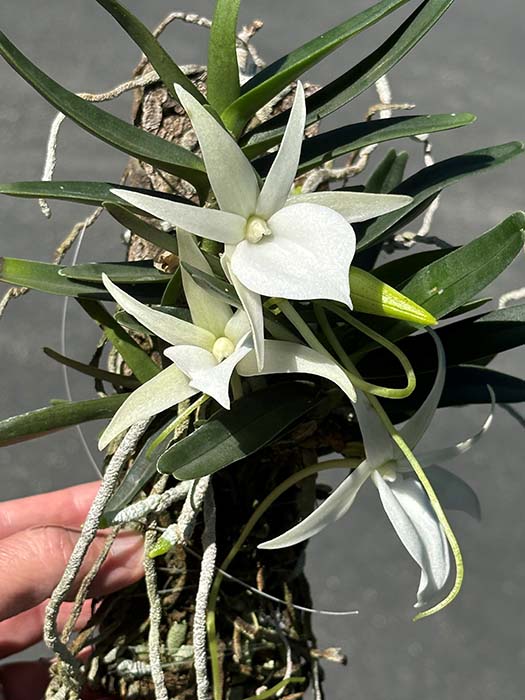 Angraecum elephantinum |
Angraecum equitans |
|
Several related species of great mini Angraecums are blooming this time of year. Angraecum didieri, elephantinum, equitans, and rutenbergianum are all compact plants with relatively large white flowers and long spurs. They are all pleasantly night-fragrant and mostly pollinated by moths. I find they grow best mounted for me as they detest repotting or stale media. They look pretty much alike, but why choose? Grow them all! |
|
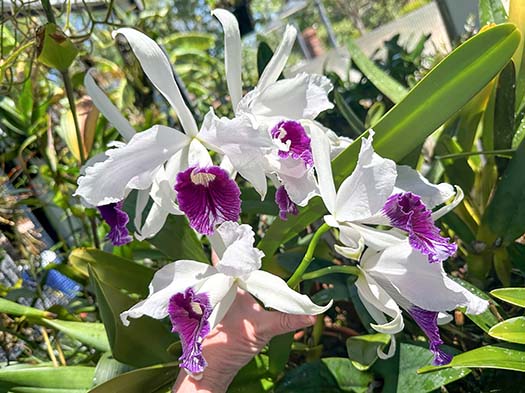
Cattleya (Laelia) purpurata f. schusterianaAlways a good show from this dark-lipped variety. |
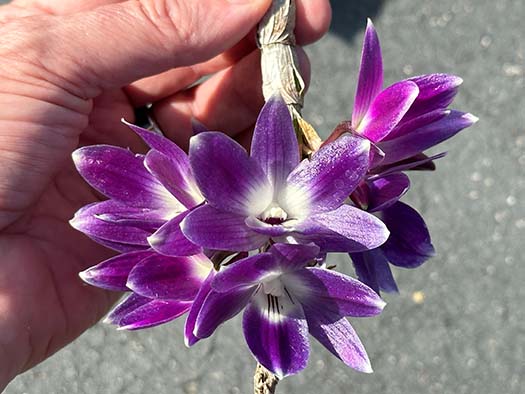
Dendrobium victoria-reginaeLong-lasting violet-blue flowers appear in clusters at the end of old leafless canes. Cool grower.
|
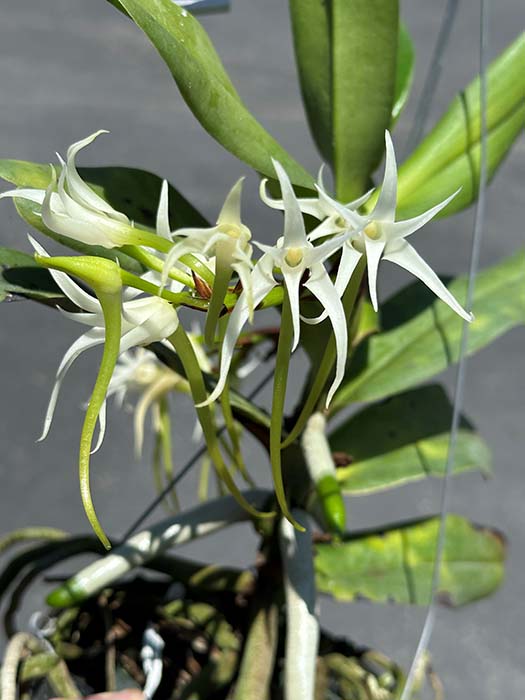 |
|
Cyrtorchis arcuata ssp. whytei 'Northern' HCC/AOS x selfA reliable Angraecoid species that grows across a wide range of Africa. It has unusually thick (10mm) roots. |
|
 |
|
Dracula roezliiDramatic flowers with simian faces growing through the bottom of the basket. I find Draculas to be easier to grow outside than their reputation, and easier than e.g. Masdevallias, although the Santa Ana winds can toast the ends on older leaves. |
|
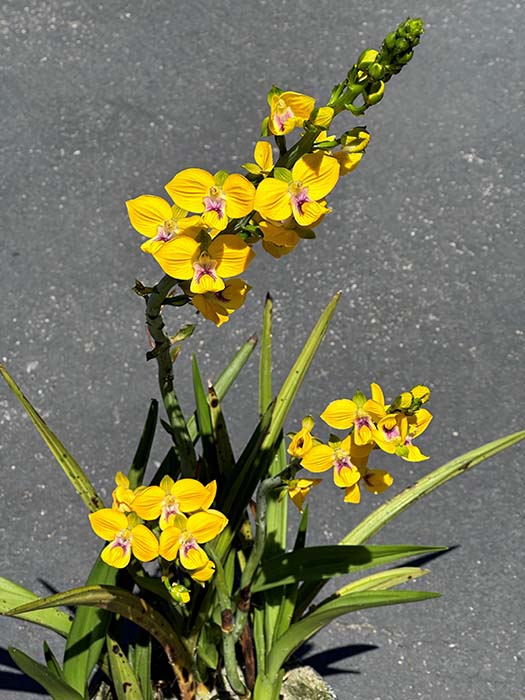
Eulophia speciosaA great desert-adapted African terrestrial species that blooms over several months with flowers opening sequentially along the spikes. Per cultural instructions from Roberta, I’m growing this in a pot of pure sand, and with several hours of full sun. |
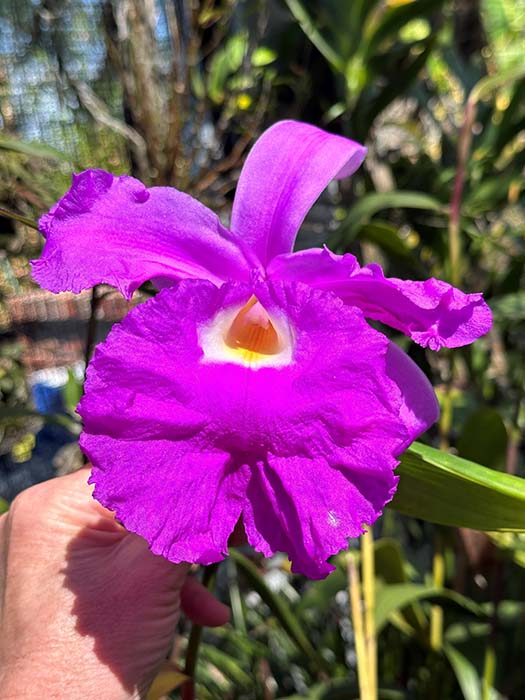
Sobralia rogersiana 'de Brito'Huge 8” flowers with a great lip—the grandest of the Sobralia species. |

Maxillaria sophronitisAn easy growing, brightly colored species that rambles out of pots and mounts. The cheerful flowers make up for the scraggly look of the plant. |
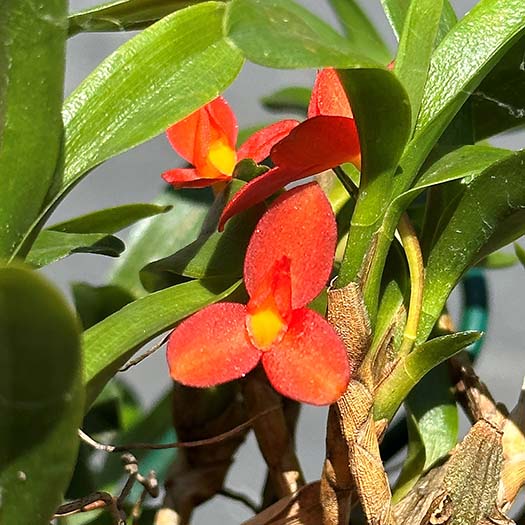 |
Maxillaria (Christensonella) vittelinifloraCute clumping mini with pine-needle-like leaves and waxy flowers. |
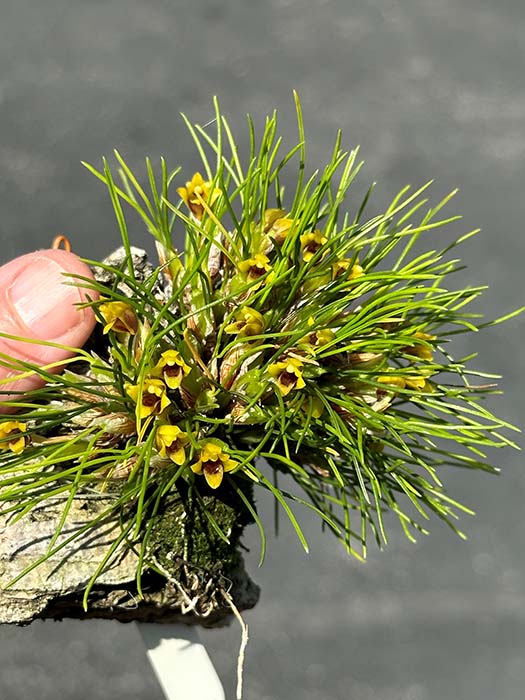 |
 |
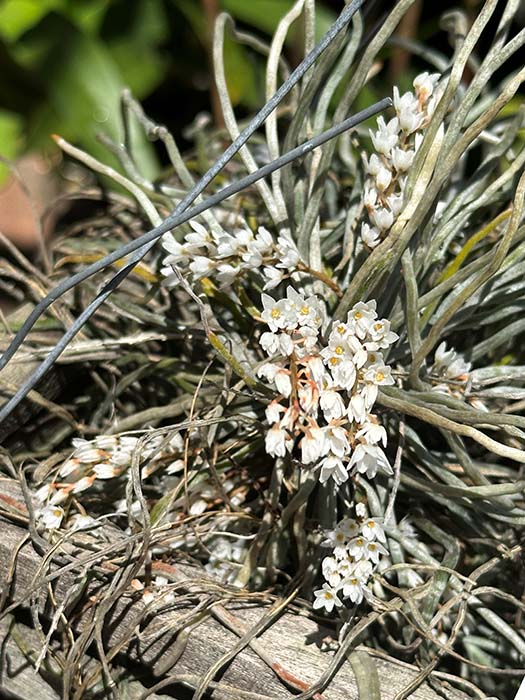 |
Microcoelia stolzii 'Cathy Fenwick's Medusa'I‘ve had trouble growing various species of Microcoelia, leafless orchids from African and Madagascar, probably because we don’t have consistently high humidity in the summer. My one exception is this M. stolzii plant, which I’ve had now for ten years and it seems quite happy sitting in an empty wooden basket and flowering consistently every summer. |
|
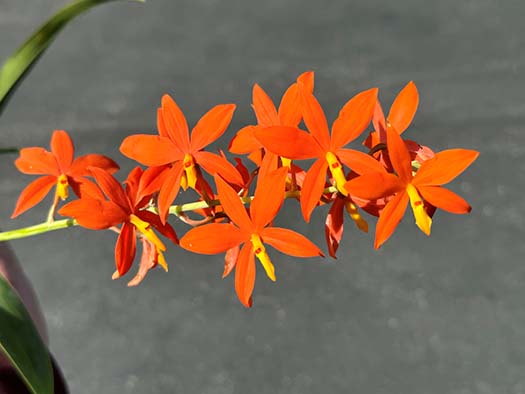
Encyclia (Prosthechea) vitellinaSo orange they over-saturate the camera! These cheerful flowers stay in bloom for 2 months. Needs cool nights, so perhaps best as an outdoor grower. |
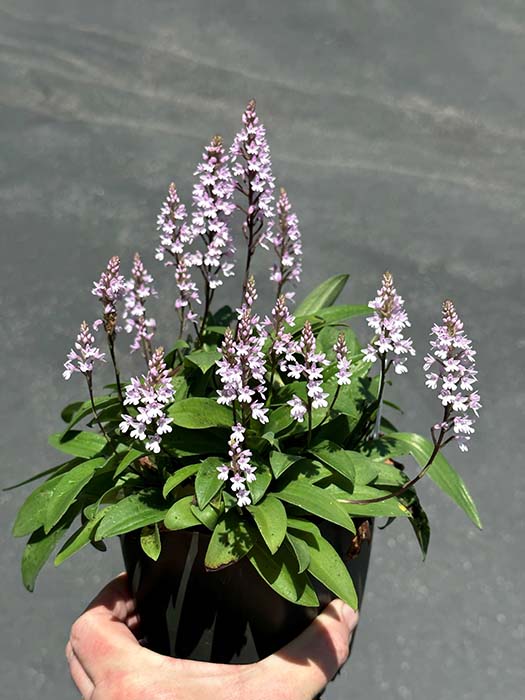
Stenoglottis macloughliniiA deciduous terrestrial that grows into a graceful clump and blooms over a long time. Was originally sold as “S. woodii”. |
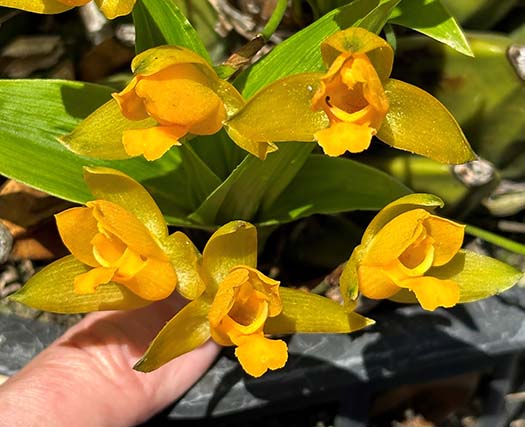
Lycaste aromaticaDeserving a place in every collection—the flowers are ok, but the intense cinnamon scent is fantastic! |
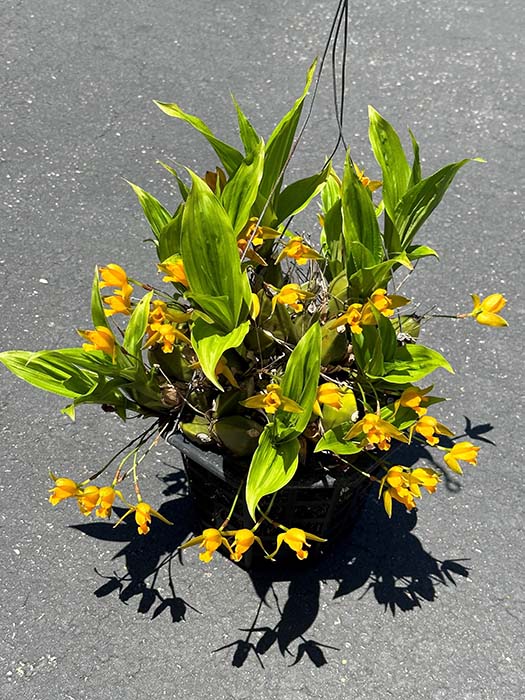 |
Pleurothallis sarracenia (Acianthera bragae)A very odd species named after the flower’s resemblance to Sarracenia (carnivorous pitcher plants), but some say it looks more like slugs kissing. Flowers are in pairs, facing each other. |
|
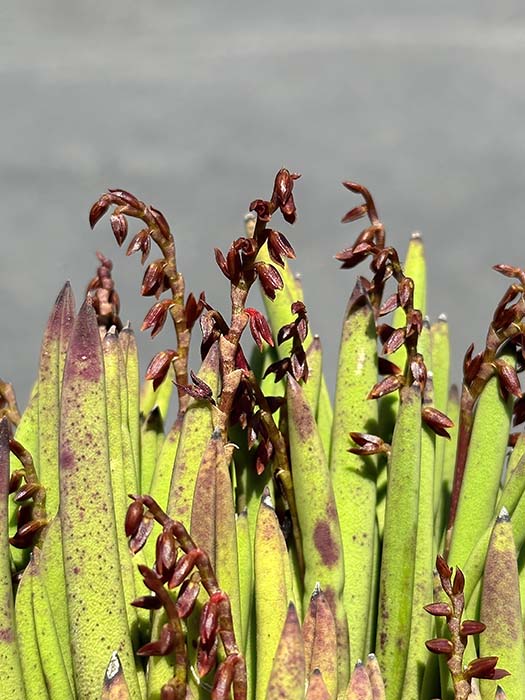 |
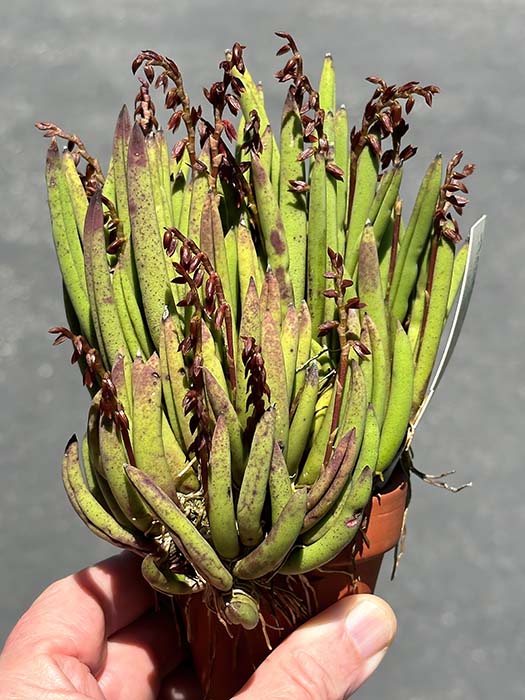 |
Pleurothallis teresLithophyte from Brazil, and unusual for Pleurothallis, this species likes it very bright and dry. The terete leaves get purple spots when in adequately bright light. The flowers are insignificant and foul-smelling—this one is better out of bloom than in bloom! I originally planted this in gravel in a 3” pot 12 years ago, and it has grown into a specimen plant in that same pot. |
|
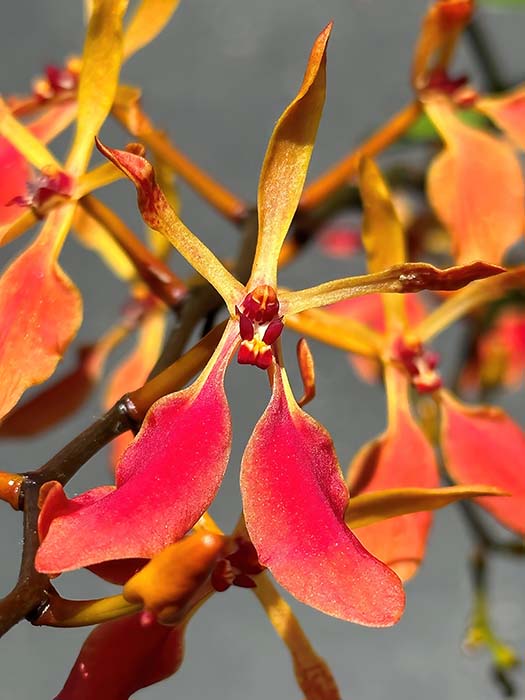 |
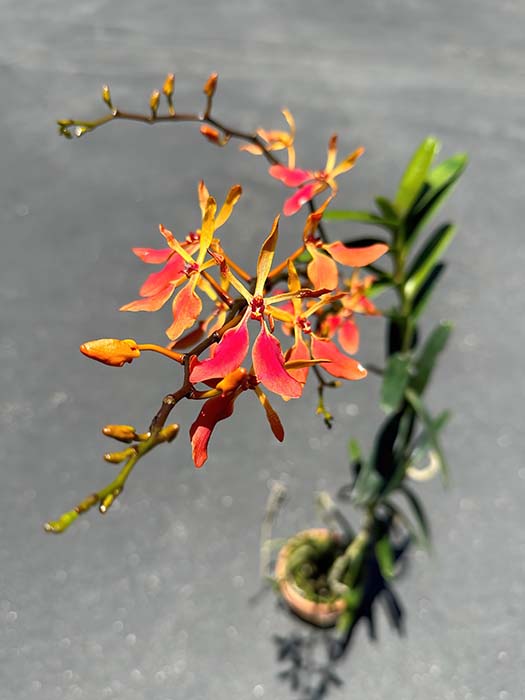 |
Renanthera pulchellaA smaller Renanthera from Myanmar with pretty 3” yellow/orange/red flowers. This is listed as a “warm-hot” or “hot” grower but seems to grow happily outside for me. |
|
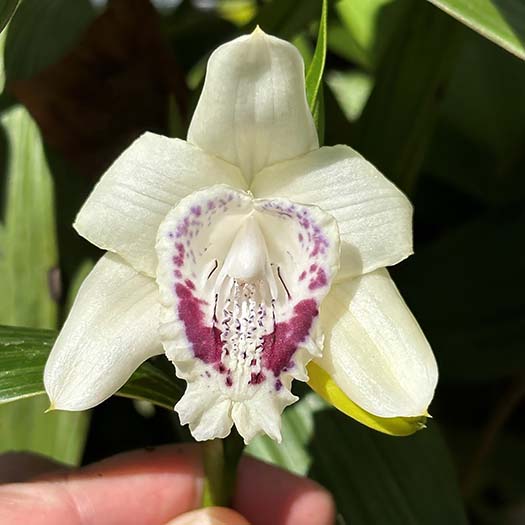
Sobralia maduroiHighly desirable Sobralia species that stays short and compact (18-24”), and has 2.5” flowers that last a few days. Similar to S. undatocarinata. |

Sobralia undatocarinataAnother great Sobralia species that stays short and compact, with long lasting (~3 days) 2.5-3” flowers. These two are very similar, but why choose, grow both! They are much more space-friendly than most other Sobralias! |
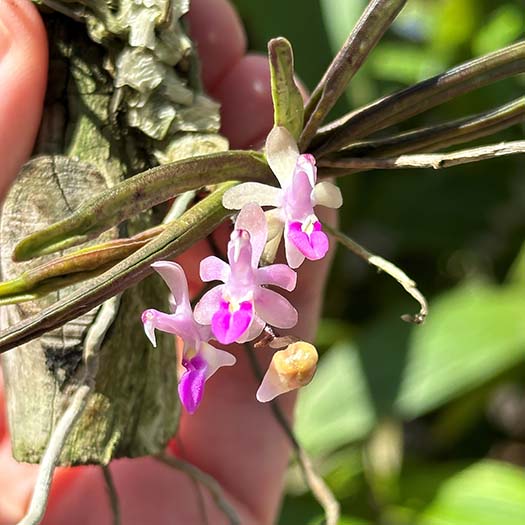
Stereochilus dalatensisCute little vandaceous species from Vietnam. Note the color variation with the different examples of this species on this page. |
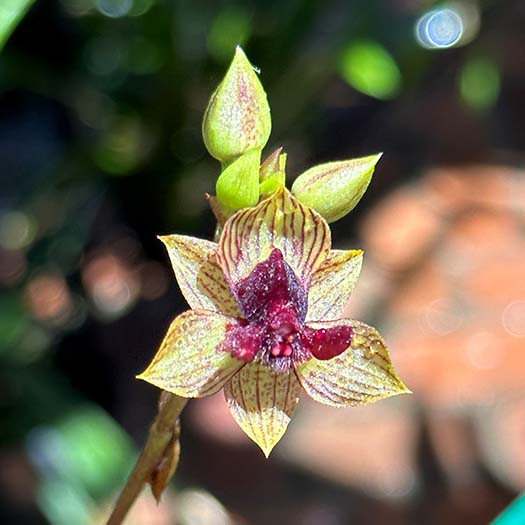
Trichoceros onaensisCute little “bug” orchid from Ecuador with 15mm flowers opening sequentially. |
From Roberta Fox:Coastal southern California |
|
Outside in the Back Yard: |
|
 |
|
Bulbophyllum thaiorumFrom south-central China, Thailand, Myanmar, Vietnam, elevations around 1370 m. It has color forms ranging from yellow to dark red. I grow this mounted, so it also tolerates some dryness. |
|
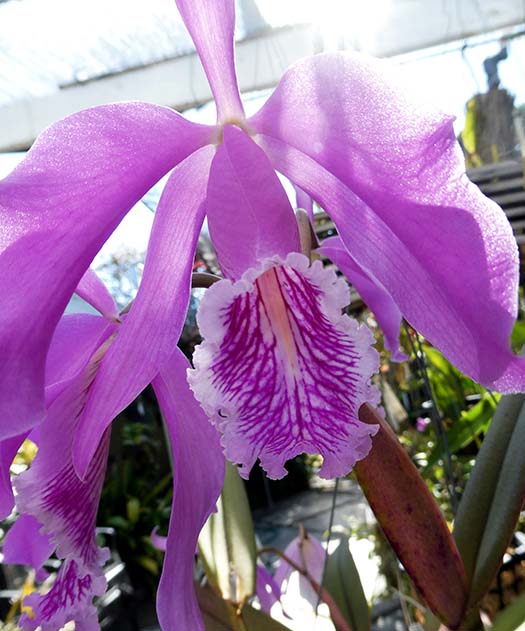 Cattleya maxima (highland form)The more commonly-seen lowland form of C. maxima needs to be grown warm. This highland form, however, has no problem with cool winter nights. The lowland form is a stately plant, with growths (pseudobulb + leaf) 24 - 30 inches or more. Flowers tend to be pale lavender. The highliand form is half the size - growths 12-14 inches. Flowers are smaller, but color is darker. This one is clearly a root machine. It is native to Colombia, Ecuador and Peru. |
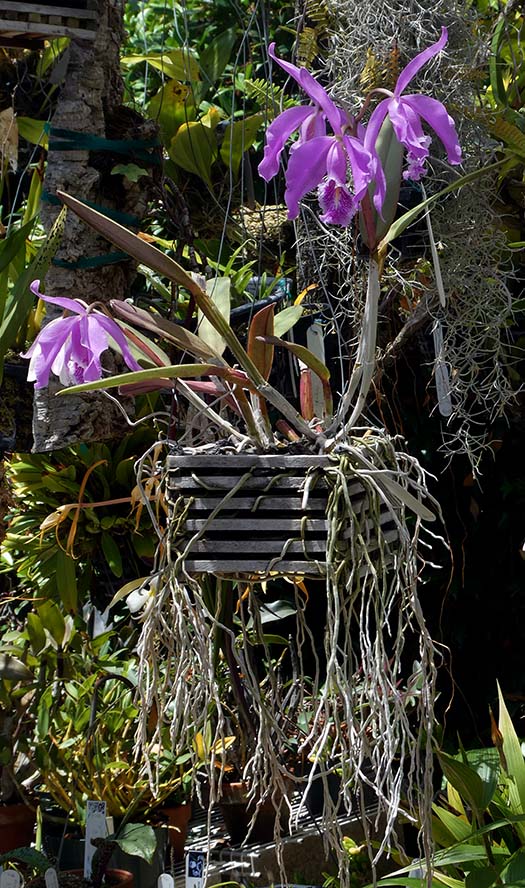 |
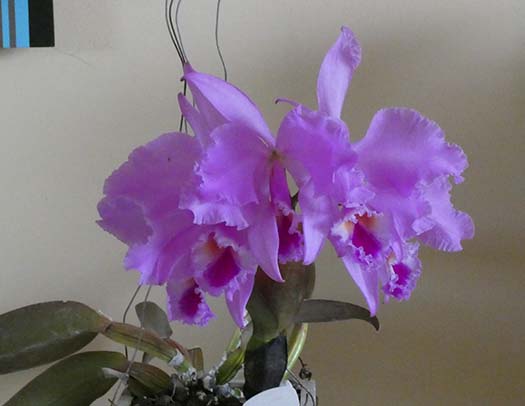 Cattleya warneri7-8 inch beautiful floofy flowers. It grows much better in the back yard than it ever did in the greenhouse where it lived when I first aquired it. |
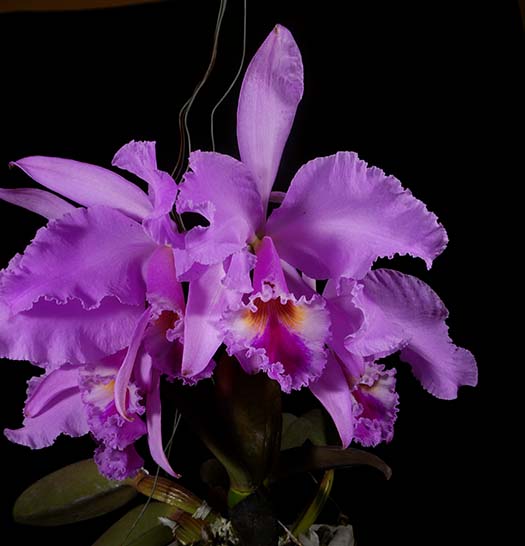 |
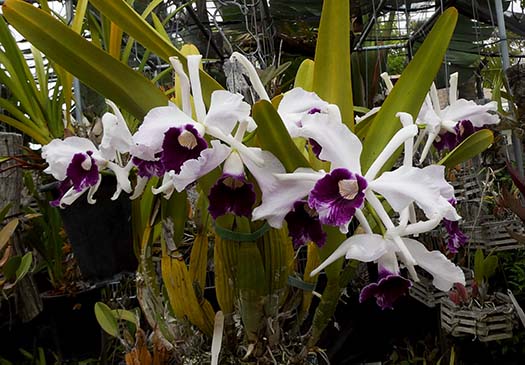 Cattleya (Laelia) purpurataCattleya (Laelia) purpurata season started rather late this year, beginning in early July rather than the usual mid-June. But once it got going, these beauties put on a lovely show. There are a wide range of color forms, not room for all of them. Above is f. schusteriana, and to the right is f. russelliana A few of the "late" forms such as carnea and werkhauseri, are just starting to open at the end of the July. |
|
Cattleya (Laelia) lobata f. albaC. (L.) lobata plant and flowers are a bit smaller than purpurata, but it's more floriforous. |
 Cattleya (Laelia) tenebrosaThe end-of-July bookend... Cattleya (Laelia) tenebrosa is closely related to purpurata, typically blooming about a month later, right on schedule. |
 |
|
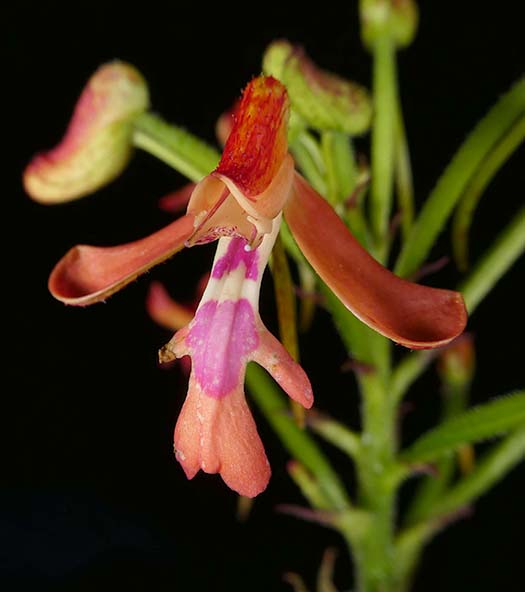 Cynorkis gibbosaNative to Madagascar, at elevations of 600-1400 m. in the cool eastern mountains. These are deciduous, but don't want to be dry when dormant. I learned this on a visit to Andy's Orchids in December (a few years ago) when I saw rows of the "empty' pots, sopping wet. If you dry it out you are likely to kill it. Never fear, it will produce new growth in the late spring. |
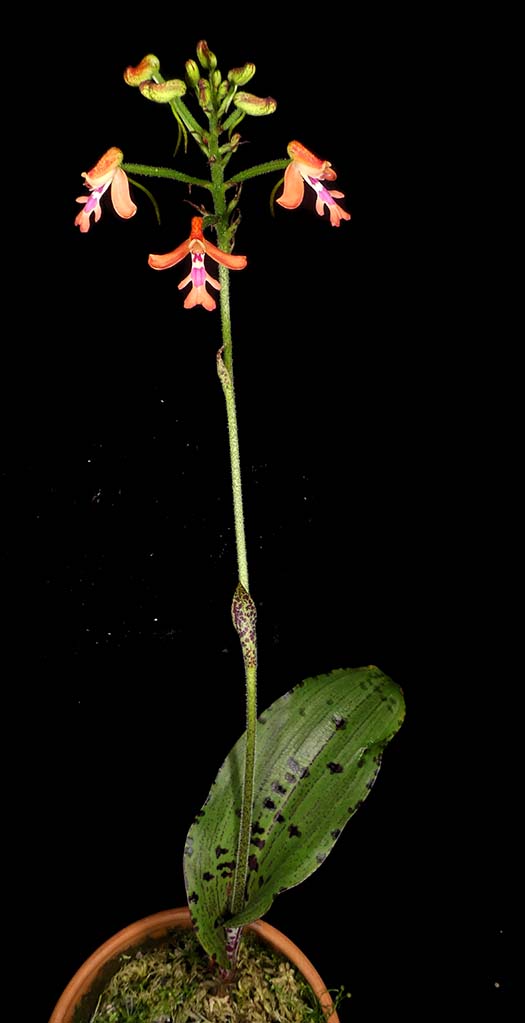 |
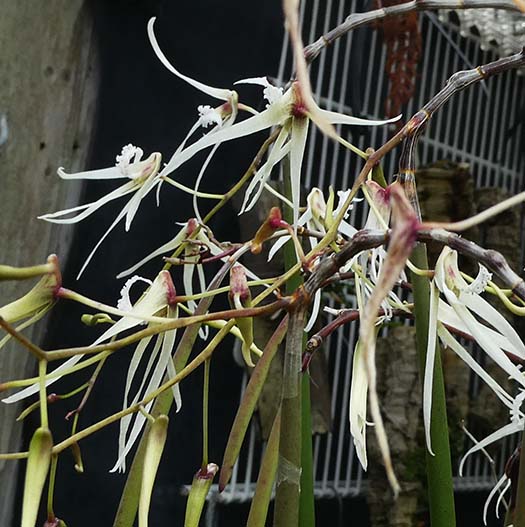
Dendrobium teretifoliumAn Australian native. Common name "pencil orchid" for its terete leaves. |
 |
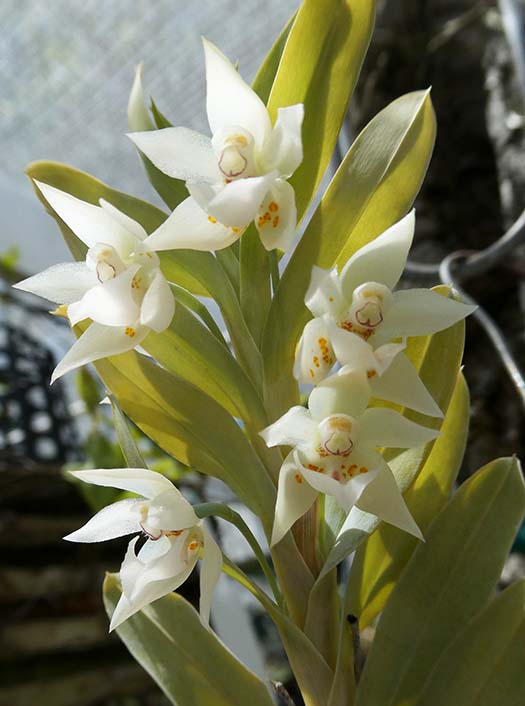 Dichaea glaucaFragrant flowers. Native to Mexico and Central America, 700-2400 m. This is the only member of the genus that I have been able to grow successfully. Most species in the genus are more tropical, pendant or spreading growth habit on trees in very moist environments, I have failed with them even in a warm, humid greenouse This one tends to grow vertically, and lends itself to pot or basket culture. So in addition to being cold-tolerant, it does much better at accommodating some drying. |
|
Hygrochilus parishii (Phalaenopsis hygrochila)This is clearly a taxonomic anomaly. Before it was Hygrochilus it was Vandopsis. In the interest of not having monotypic genera, it has been lumped into Phalaenopsis. But it grows like a cool-growing Vanda. It has broad leaves, and grows on (rather than in ) a bare 8 inch basket with no medium at all. The roots are about 3 ft. long and continuing to grow, with beautiful green tips. Flowers are fragrant. It is native to a wide range of the Himalayan foothills, in India, southern China, and across southeast Asia, at elevations from 600-1500 m. |
|

Sedirea (Phalaenopsis) japonicaHere's another taxonomic anomaly. The genus is Aerides spelled backwards. So at some point it was treated as an Aerides (Vandaceous) relative. It is fragrant, with a Vanda-like growth habit. I grow it mounted. It is native to Japan and Taiwan. The Baker culture sheet gives a habitat temperature range of 20 deg F to 97 deg. F. Or, anything goes. (I would have serious doubts about sub-freezing temperatures, but near-frost is no problem.) |
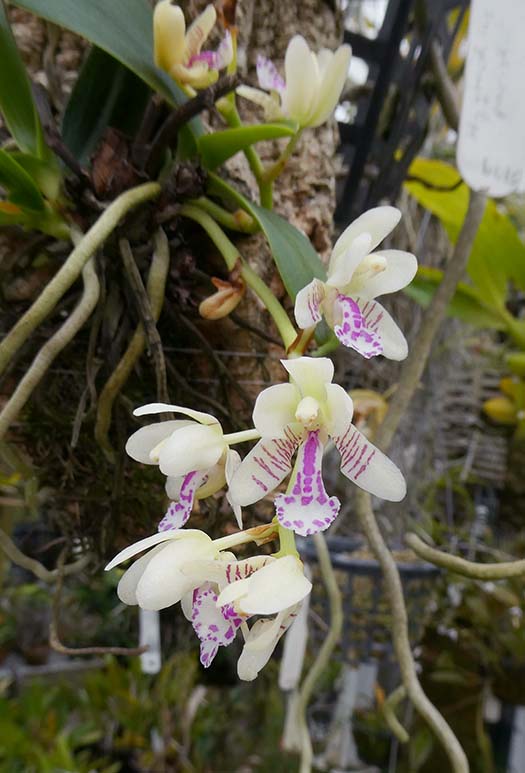 |

Lockhartia oerstediiNative to southern Mexico and much of Central America. It can grow as high as 2700 m, but also at lower elevations. The leaves have an interesting "braided" look. A growth can bloom over a few years, even when looking fairly old. It's very easy to propagate by division, since each growth seems to root inependently - just peel one off, stick in some sphagnum, and it takes off. |
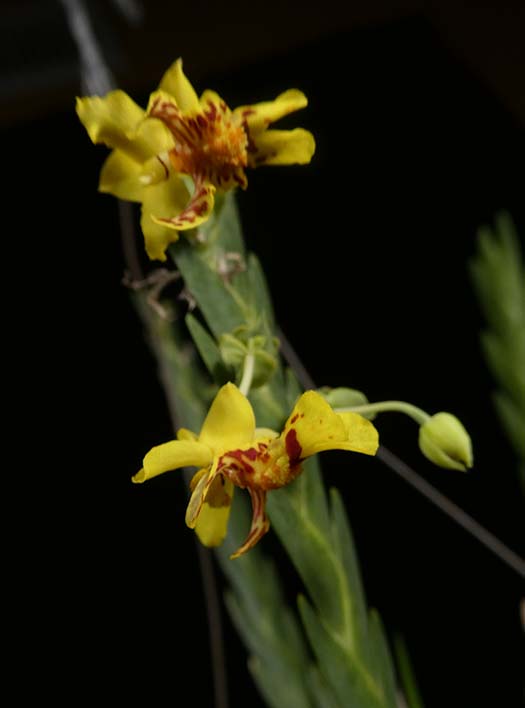 |
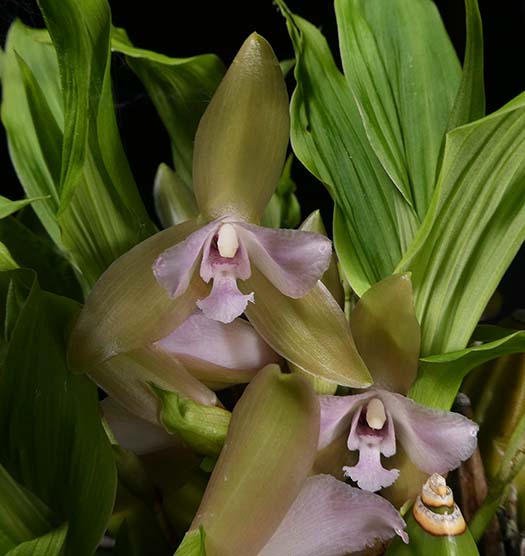 |
|
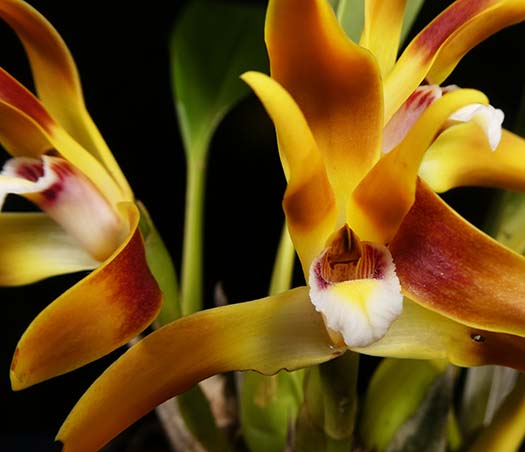 Maxillaria callichromaLong-lasting 2 inch flowers with heavy substance. This is the second blooming this year, and it is still producing some new buds. Native to Colombia and Venezuela, elevations 900-2600 m. This plant grows vigorously in a 1-gallon pot with large bark. |
 |
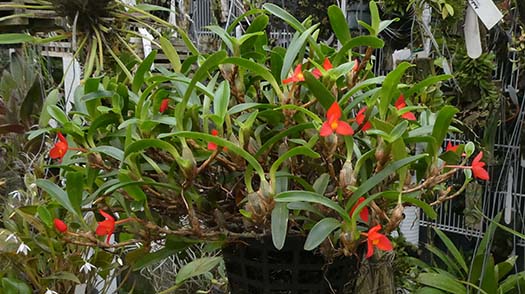
Maxillaria sophronitisThis plant produces a few flowers on and off over much of the year, but 2 or 3 times a year produces a flush bloom like this. Flowers are only about a half inch, but make up for small size with quantity and briliant color. The plant has far outgrown its 6 inch basket, and the new growths seem to be quite satisfied to have roots hanging freely in the air. Native to Colombia and Venezuela, elevations 760-1520 m. |
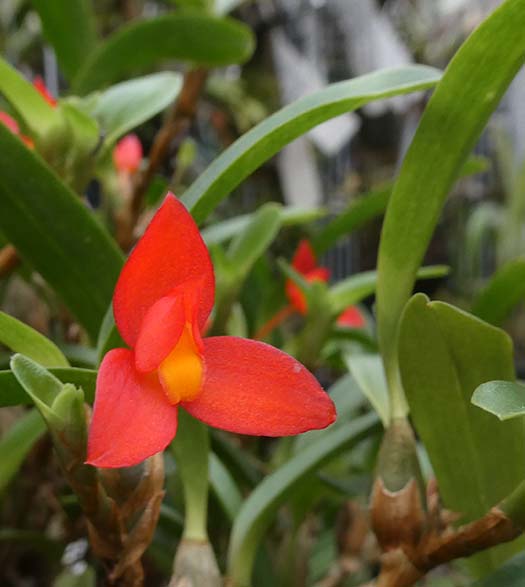 |
 Maxillaria tenuifoliaThe typical red form, and the butter-yellow aurea form are blooming profusely. Both have a fragrance of coconut. As with all of the Maxillarias with this growth habit of pseudobulbs extending along a stem, don't be tempted to "tidy it up by removing the dry bracts in between the pseudobulbs. Those protect a root system that extends from the farthest growth down to the main root ball, and removal can kill the plant. |
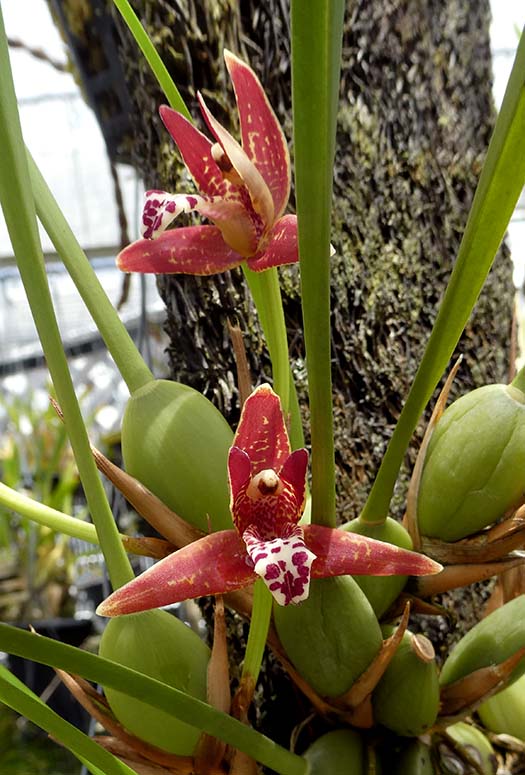 |
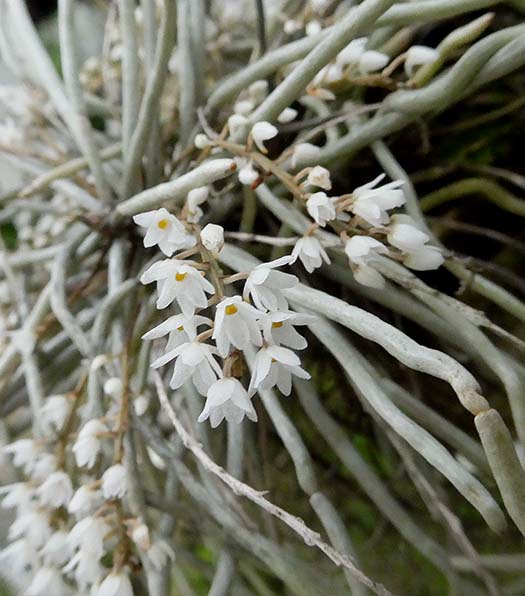
Microcoelia stolziiThis leafless orchid from a wide area of southern and eastern Africa has been growing on top of a mostly-disintegrated wood basket. The flowers have faded so I decided to clean things up a bit. There were no roots attached to the basket, and the healthiest ones were the new ones farthest from it. So I just plopped it on top of an inverted 4 inch plastic basket, and hung it back up. It clearly likes growing freely in the air. |
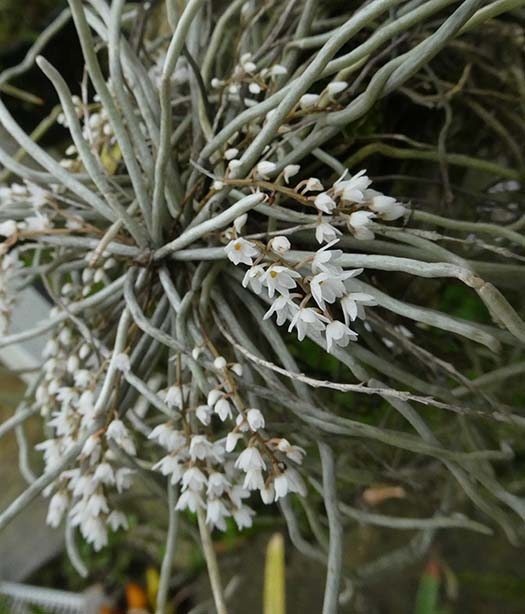 |
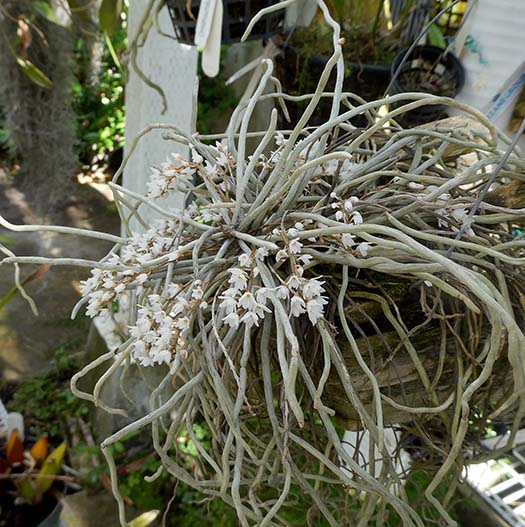 |
|
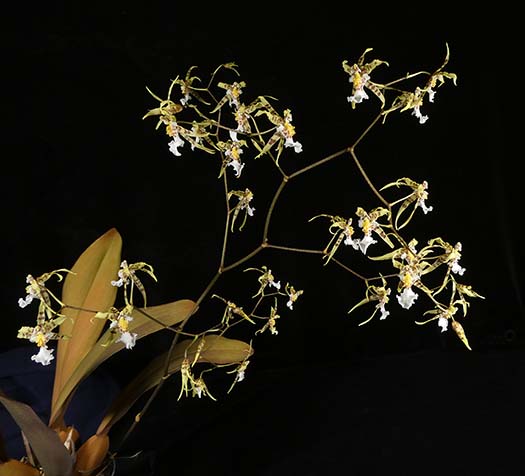
Oncidium phymatochilum
|
|
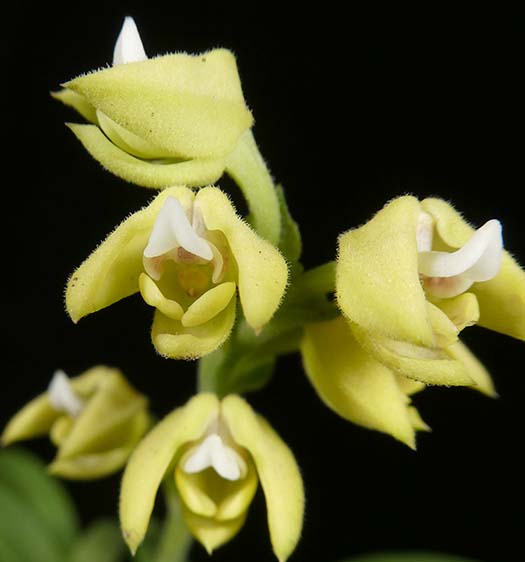
Polystachya zambesiacaMany of this genus grow warm, but this one comes from cooler areas of central and southern Africa, at elevations from 900 to 2000 m. Flowers are a bit less than half an inch, and very intricate. |
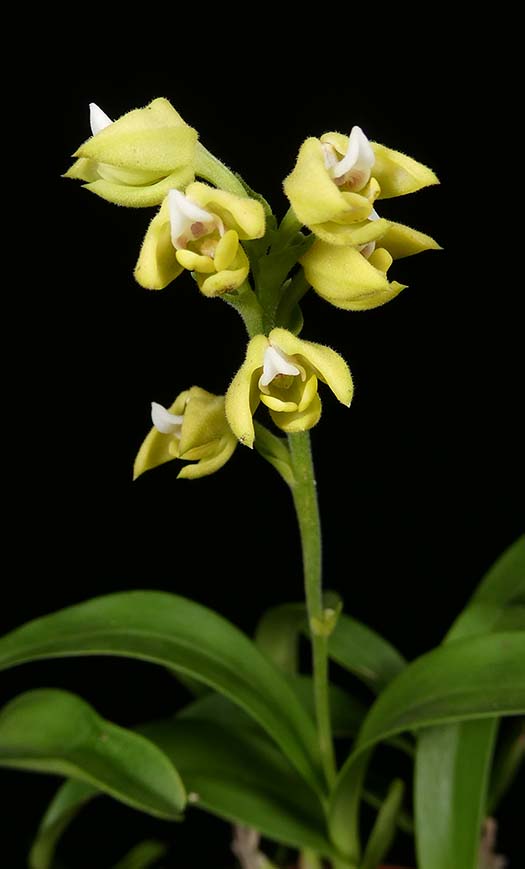 |
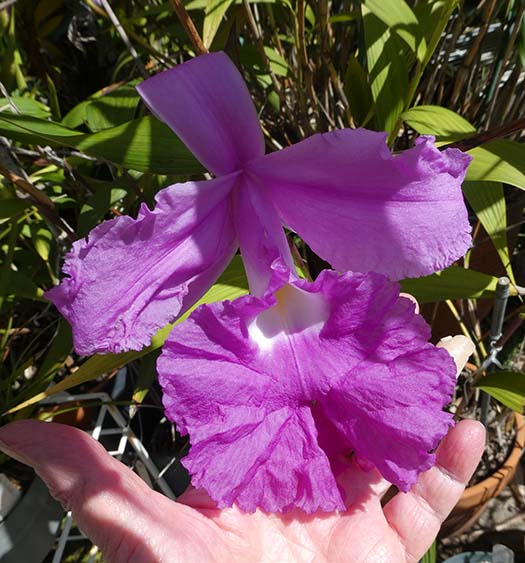
Sobralia macrantha? or rogersiana?This one was labeled "Sob. macrantha" but is much larger than the typical form, and may be a closely related species, Sob. rogersiana. My hand for scale... |
|
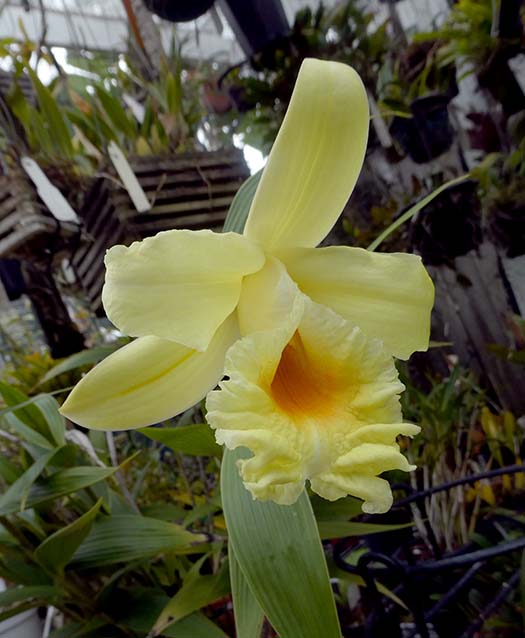 Sobralia xantholeucaEye-catching butter-yellow flowers just keep coming. |
 |
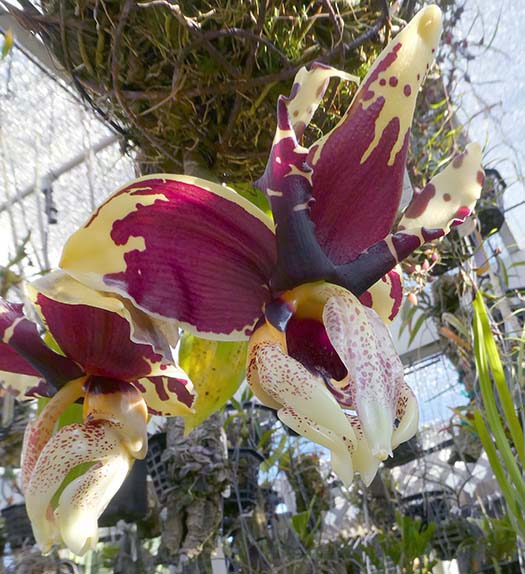
Stanhopea tigrina var. nigroviolacea
|
 |
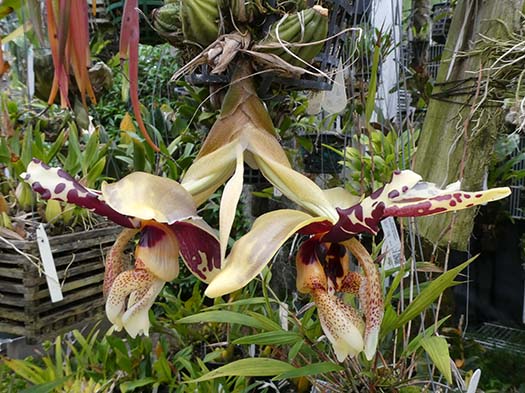 |
|
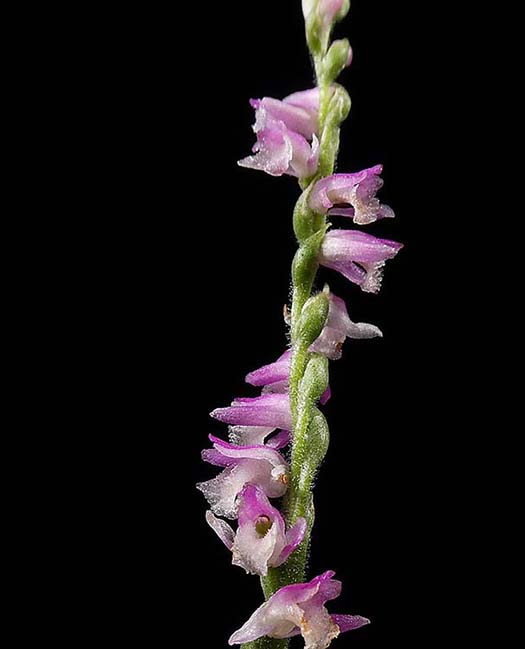 |
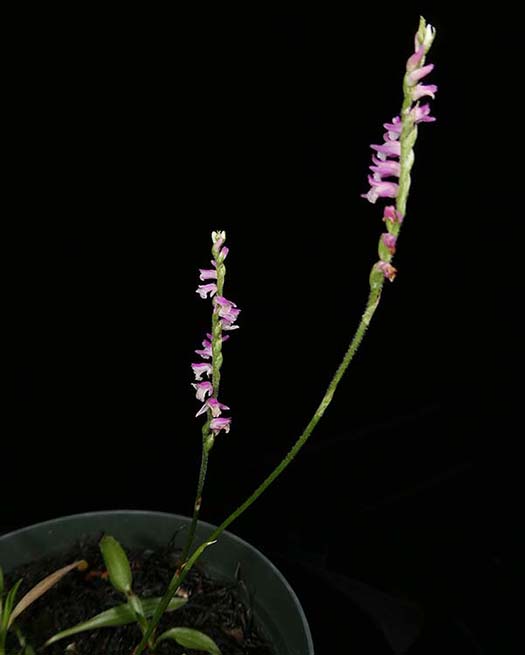 |
Spiranthes sinensisA very cute terrestrial, found over a huge area from Siberia to Australia. It goes dormant in winter so that it can survive serious cold, but also lives in more temperate areas. The "common denominator" appears to be WET (it's a bog plant), reduced to "damp" in winter. It is capable of forming a clump, which is my hope. Whether I can strike this balance (winter cool but not uniformly cold, damp but not soggy wet) remains to be seen. |
|
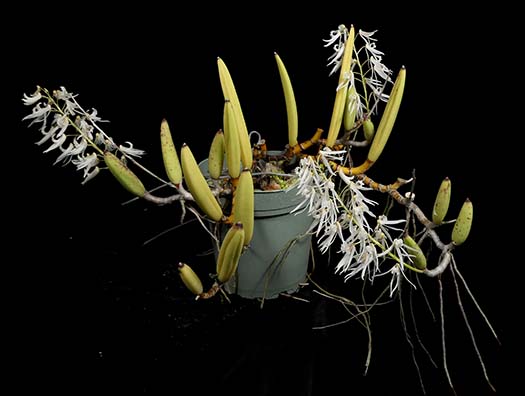 |
|
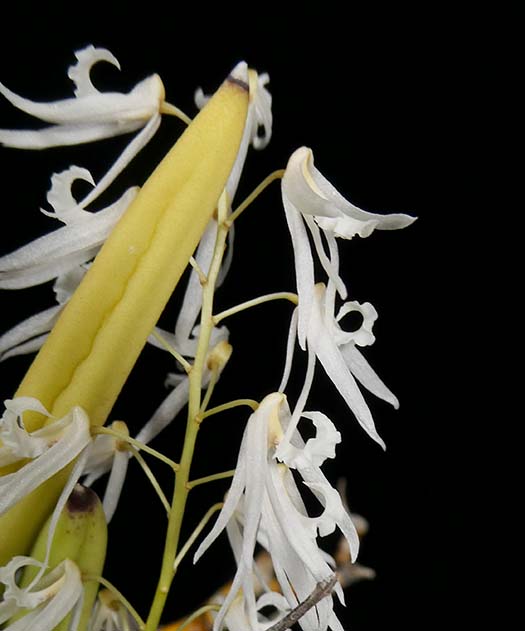 |
|
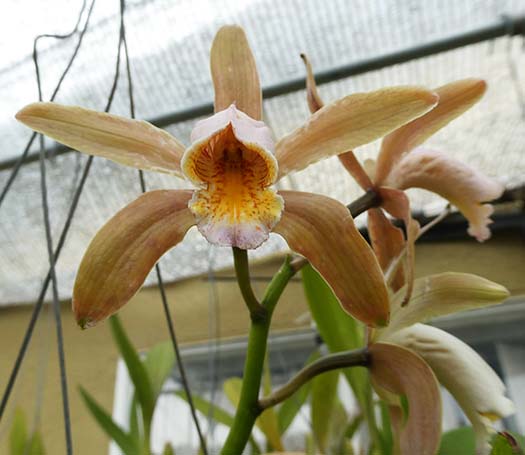 Cattleya forbesiiThis Brazilian species is not particularly dramatic with its small size and relatively dull color, but it has other delightful characteristics. It is very temperature-tolerant (both hot and cold), rather bullet-proof. And it typically grows rapidly, blooming 2 or 3 times a year. |
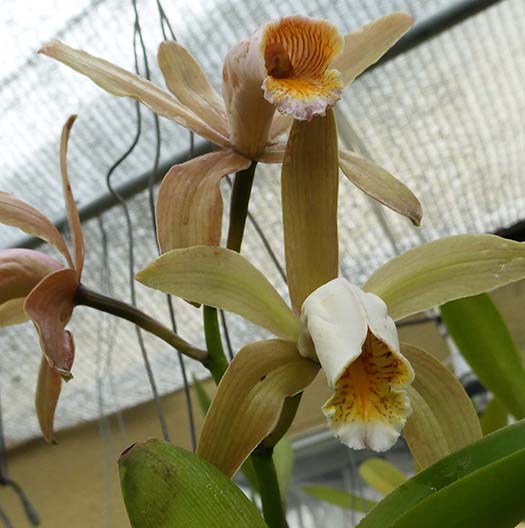 |
 |
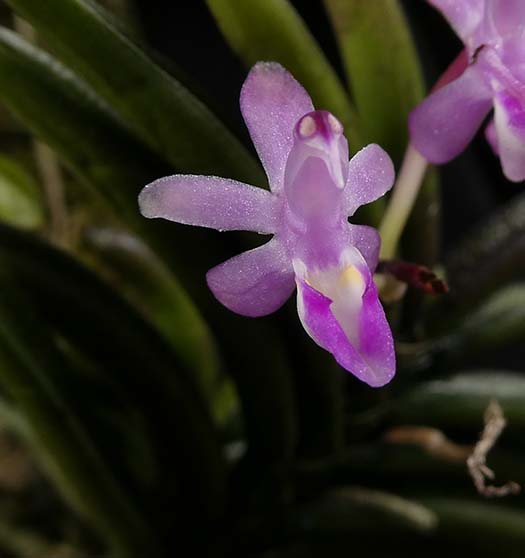 |
Stereochilus dalatensisNative to Thailand, Vietnam, and south-central China. Note the color variation of the different examples of this species shown this month. |
|
In the greenhouse... |
|
|
|
 |
|
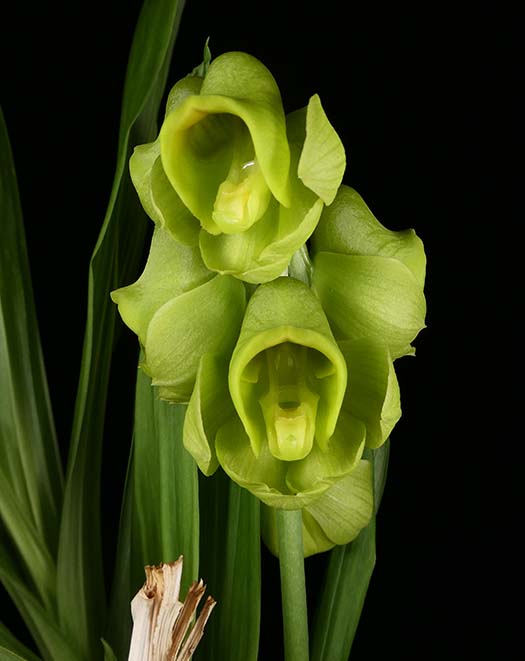 |
|
Catasetum planicepsIn prior years I have grown my Catasetinae outsde starting in around May, when night temperatures got above 55 deg F and leaves were well developed, so I put them in the "outdoor" section. This year, nights stayed quite chilly into June, and the spring growth was delayed, so I kept most of them in the greenhouse. This one won't win any beauty contests, but it is a bit odd. Usually when one sees a Catasetum with a helmet-shaped flower, it's female (and all the species look pretty much alike). But this one is, in fact, male. You can see the "triggers" for the pollinia. |
|
 Dendrobium venustumA great plant-to-flower ratio on this miniature, a 3 inch plant with a 3.5 inch raeceme of 0.75 inch flowers. I love the segmented lip on this one. Southeast Asia, elevations 300-460 m. |
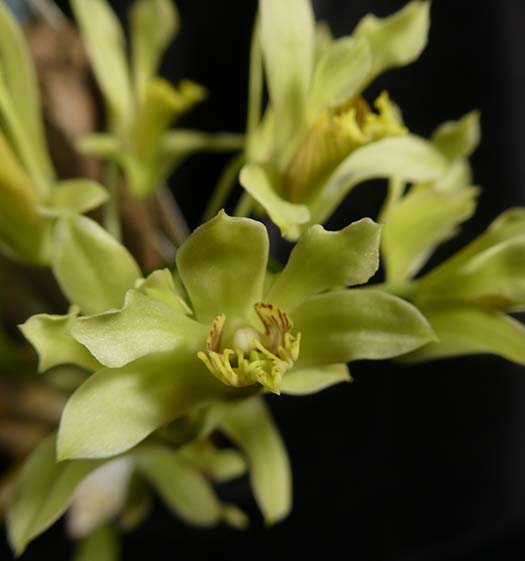 |
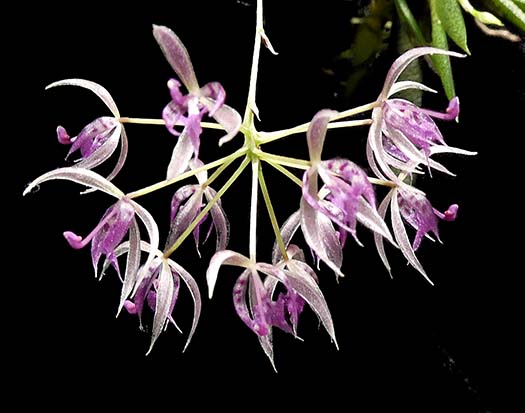 |
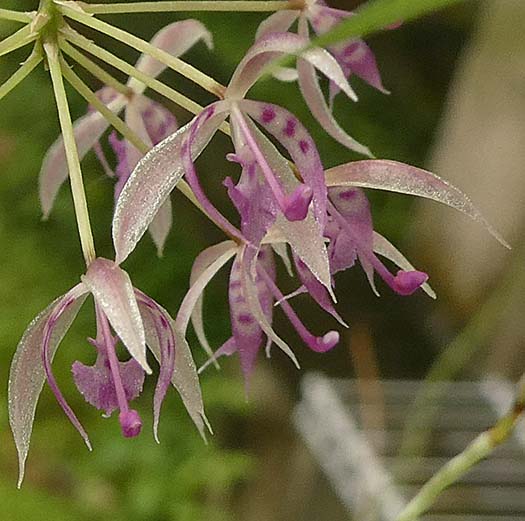 |
Macroclinium manabinumNothing "macro" about this one... the plant is about an inch. The flowers emerge on an umbel that reminds me a bit of a dandelion. An inflorence can bloom more than once, so don't cut an old spike until it is crispy - you may get another batch of flowers. Native to Ecuador, elevation 100-370 m. |
|
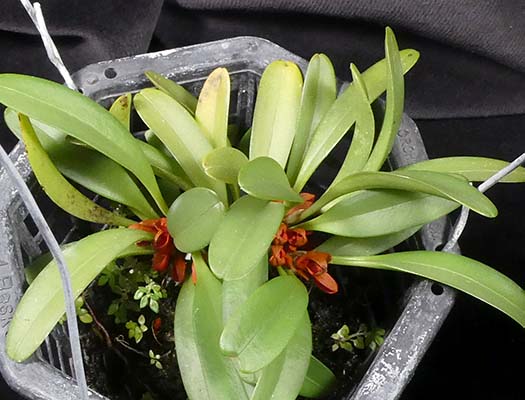
Pleurothallis tribuloidesI grow one of these in the greenhouse (in a basket) and one outside mounted. Both bloom. This one, in the greenhouse, has produced an especially nice bloom. The one outside is just getting started. Flowers are about 0.25 inch, but lots of them with dramatic color. Native to Mexico and Central America, elevations 300 to 1200 m or more. Clearly it can grow over a wide range of temperature conditions. |
 |
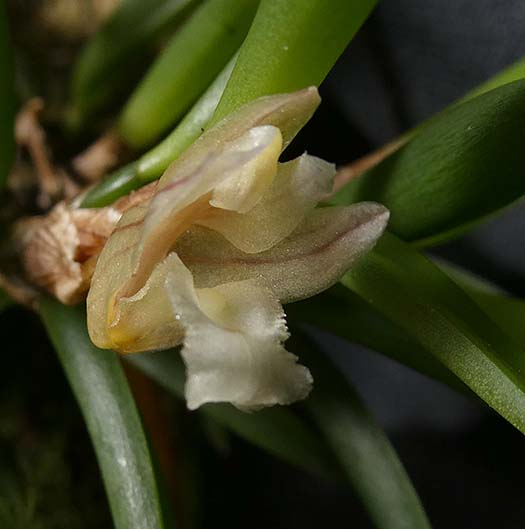
Maxillaria uncataI saw this species when I was on the riverboat on the Rio Negro in Brazil. The leaves ave very succulent and semi-terete. |
 |

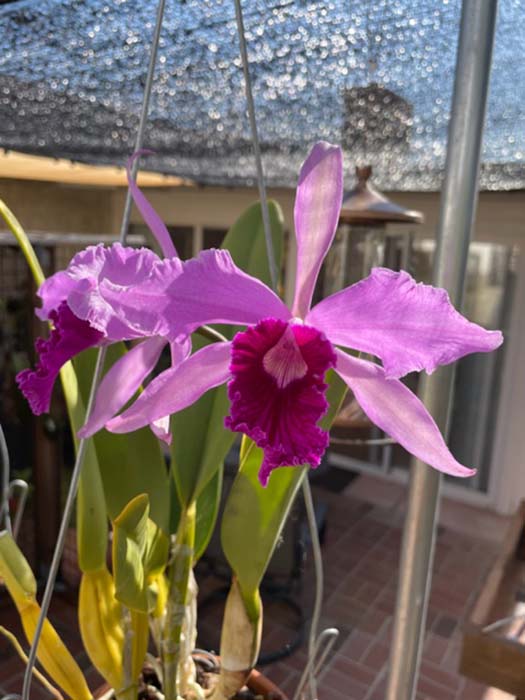

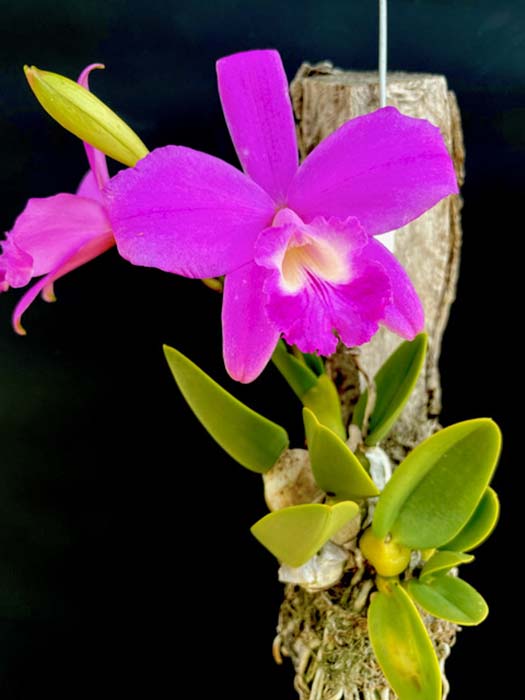
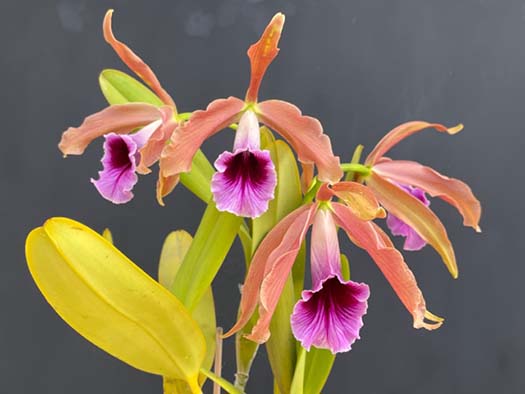
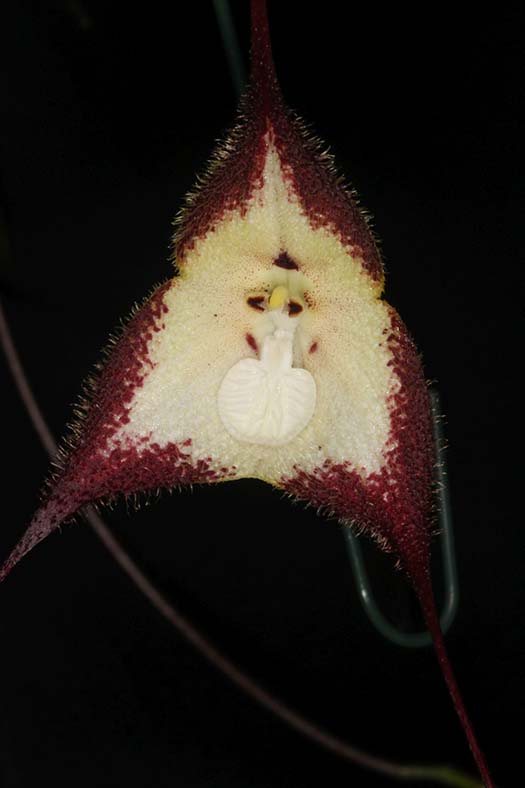

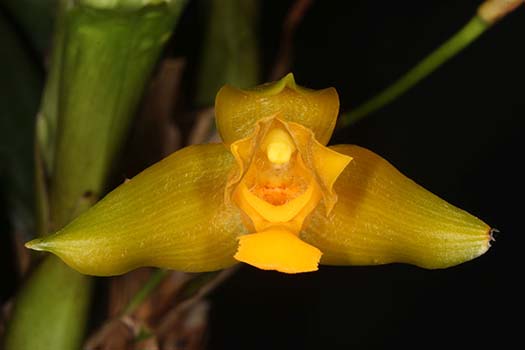
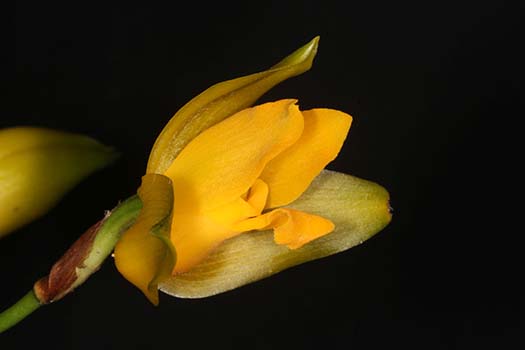
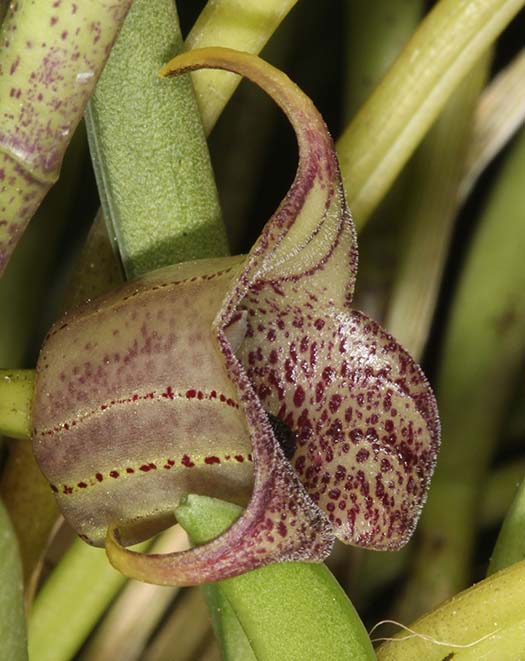
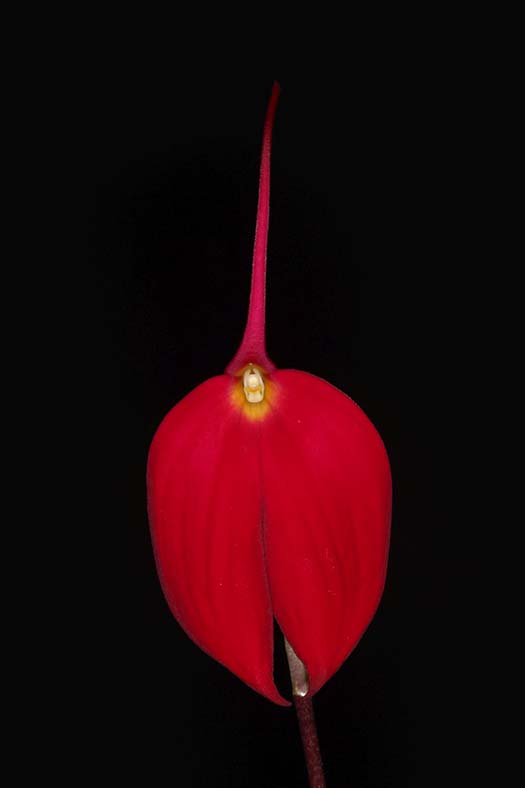
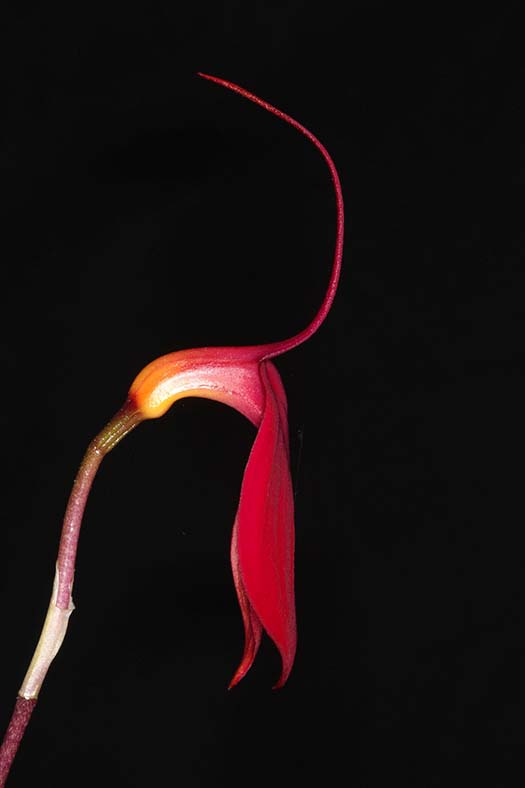
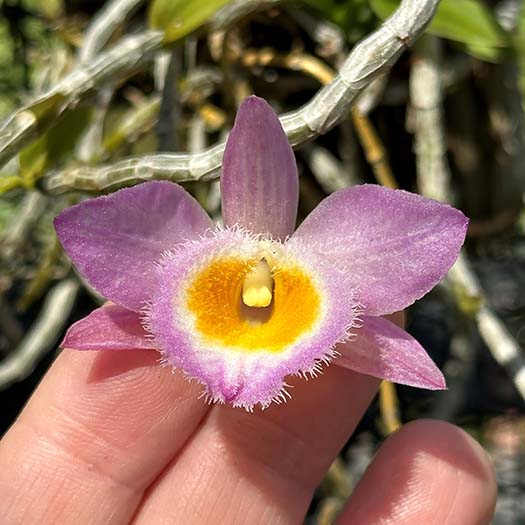
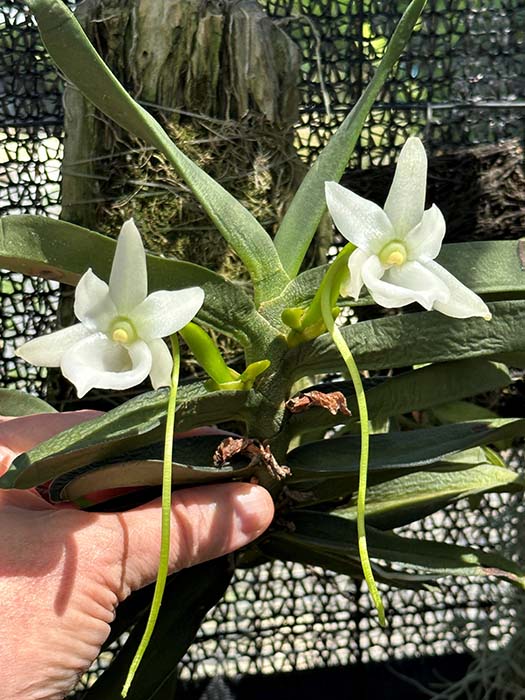
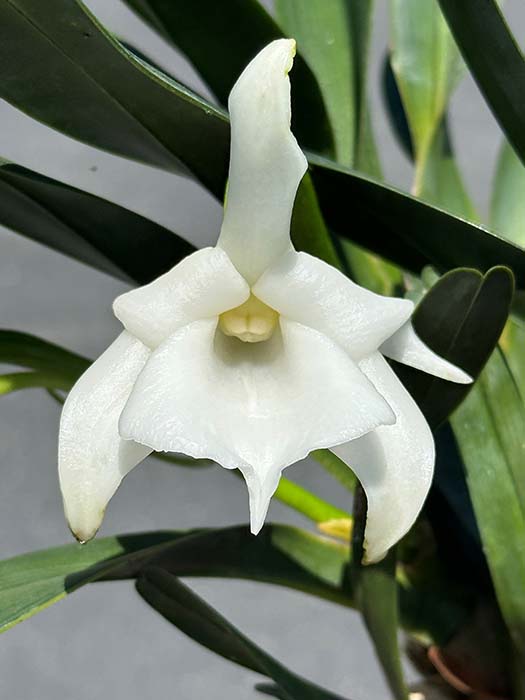
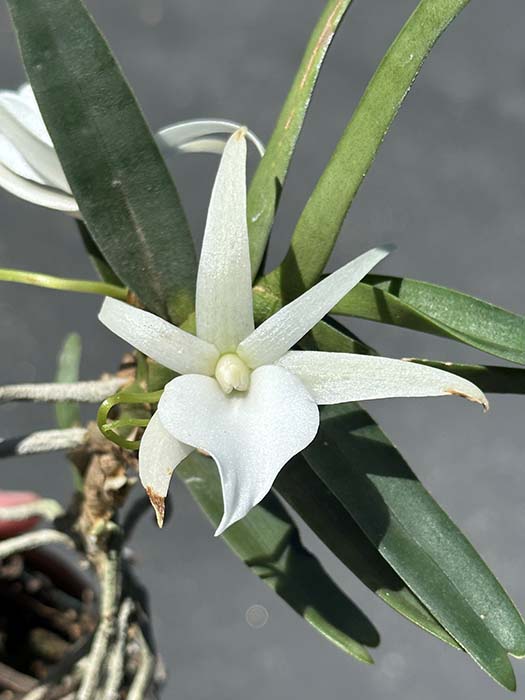
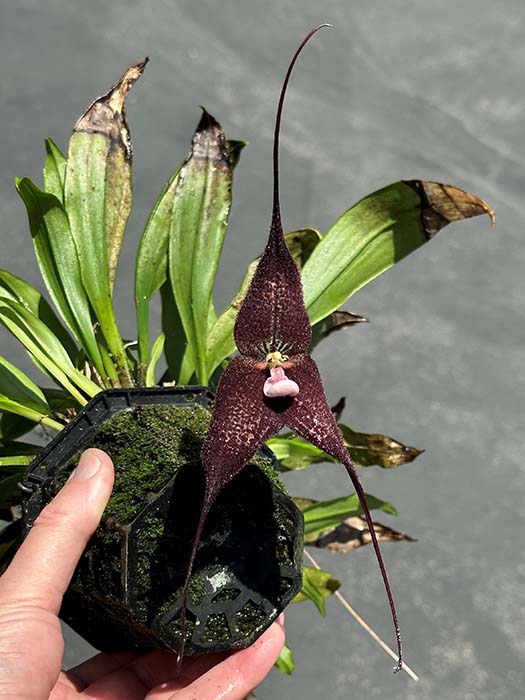
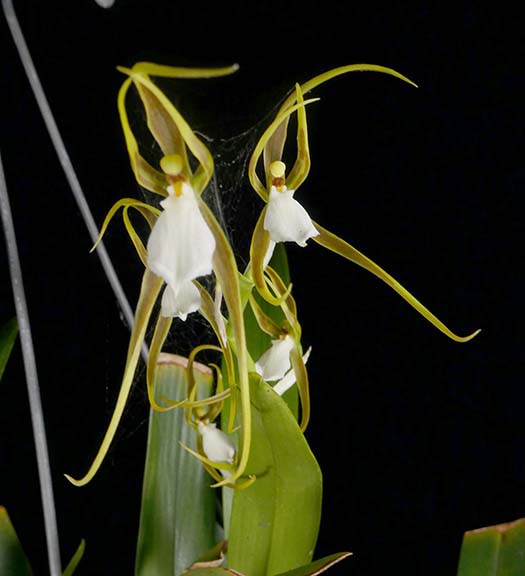
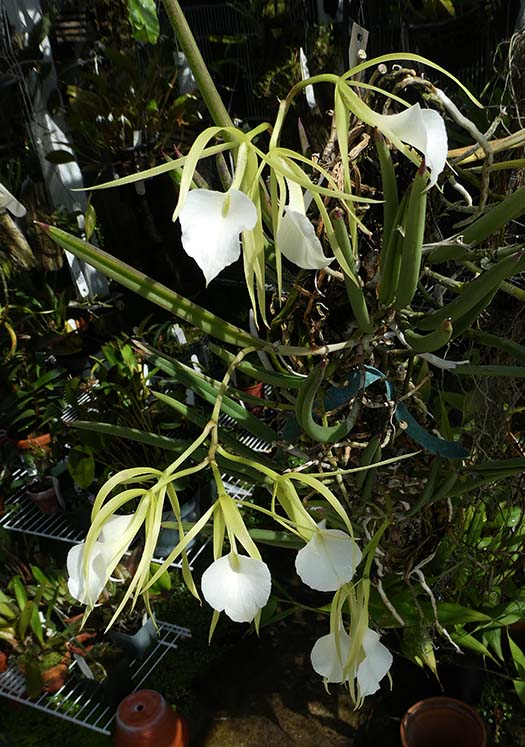
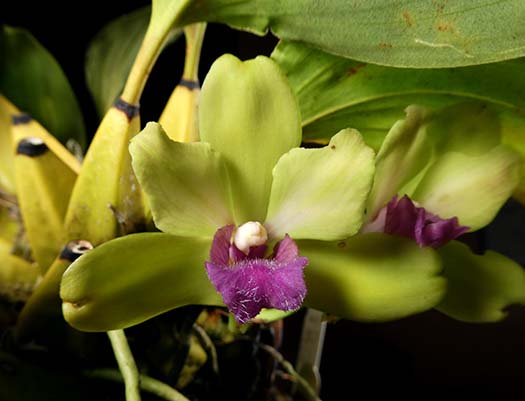
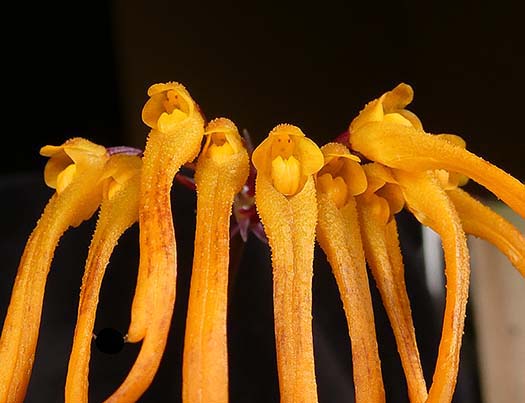
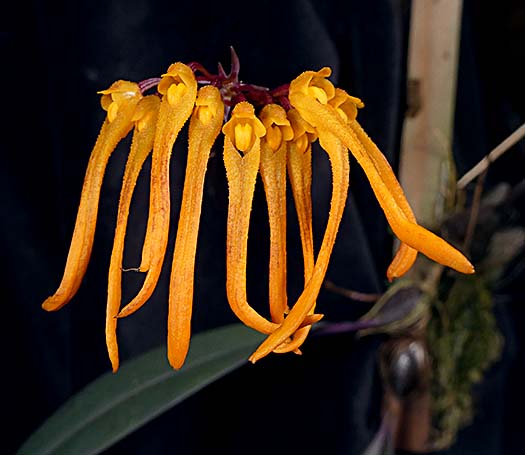
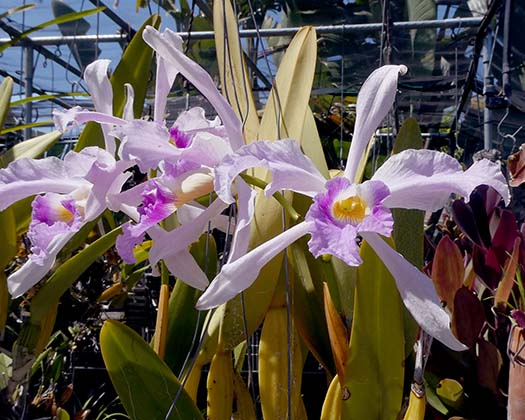
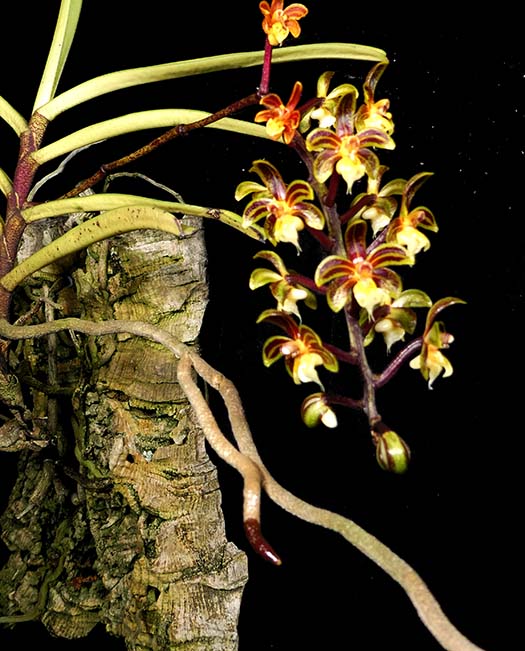
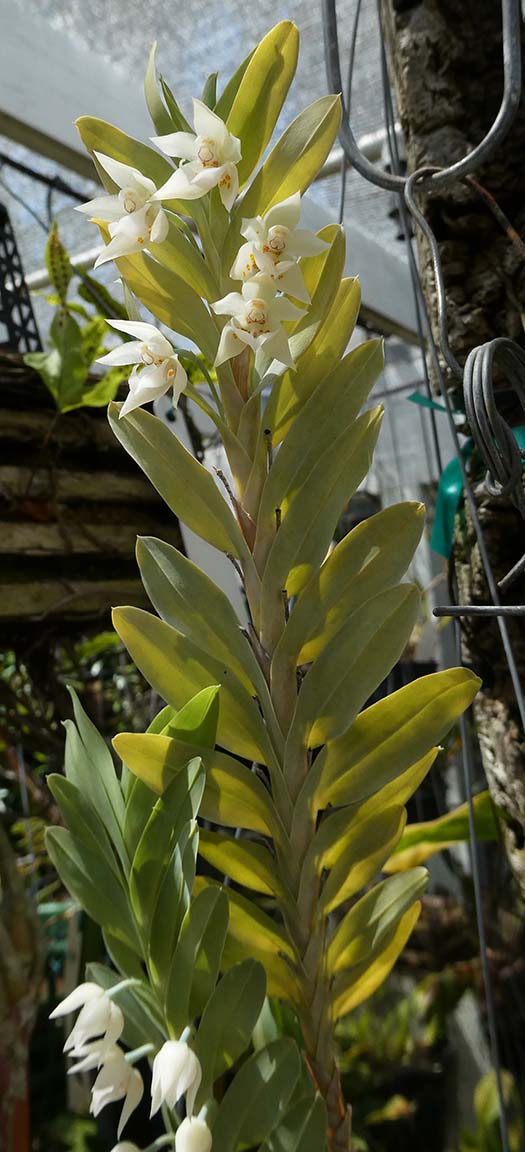

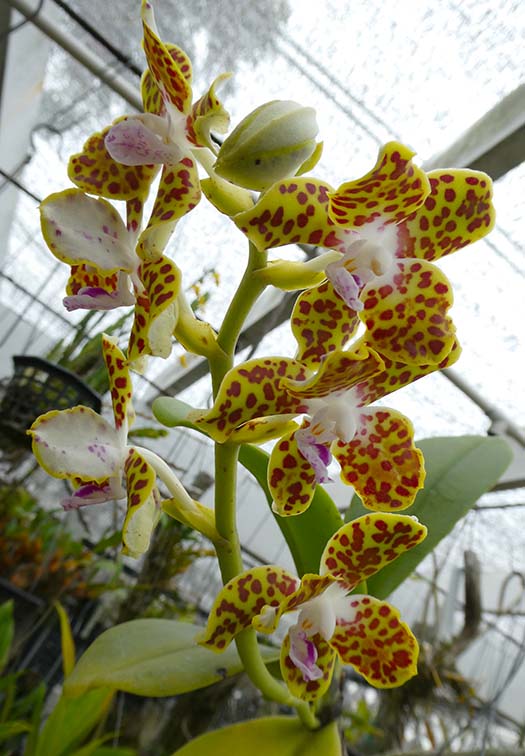

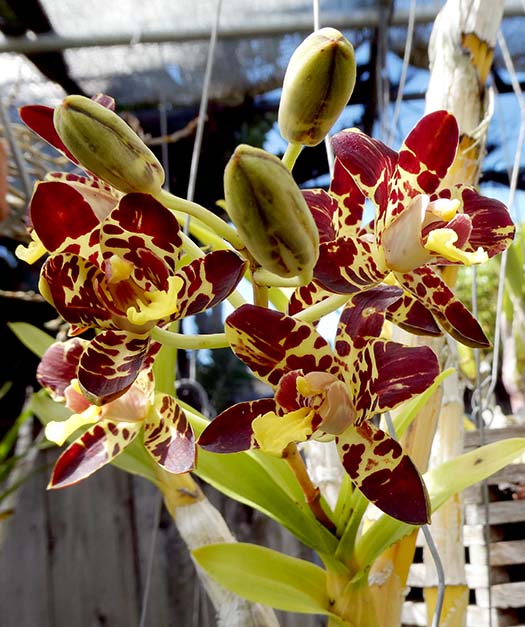
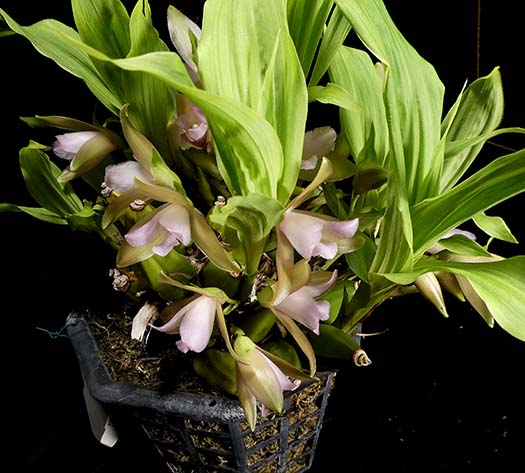

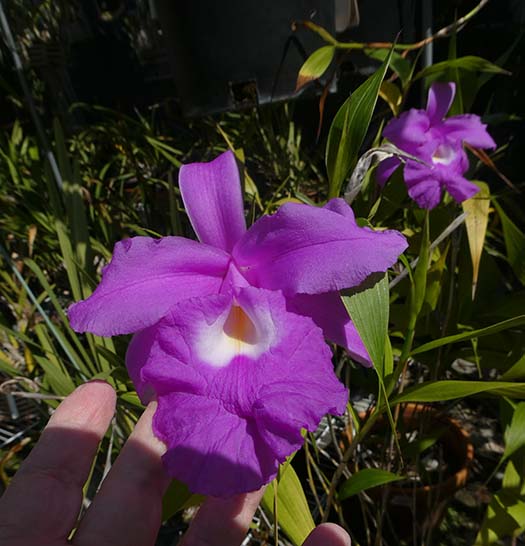
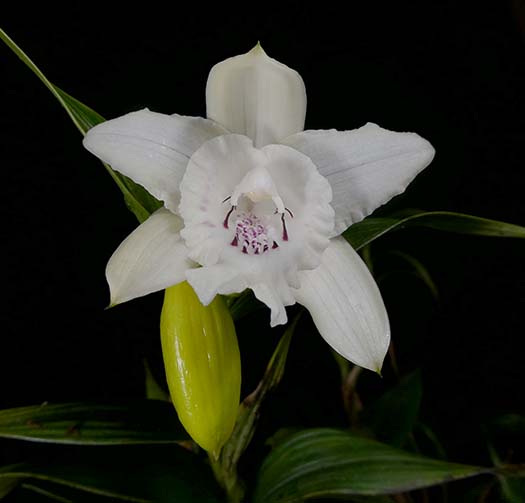
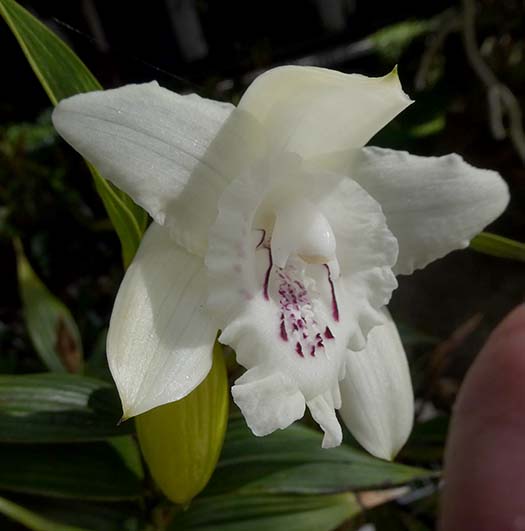
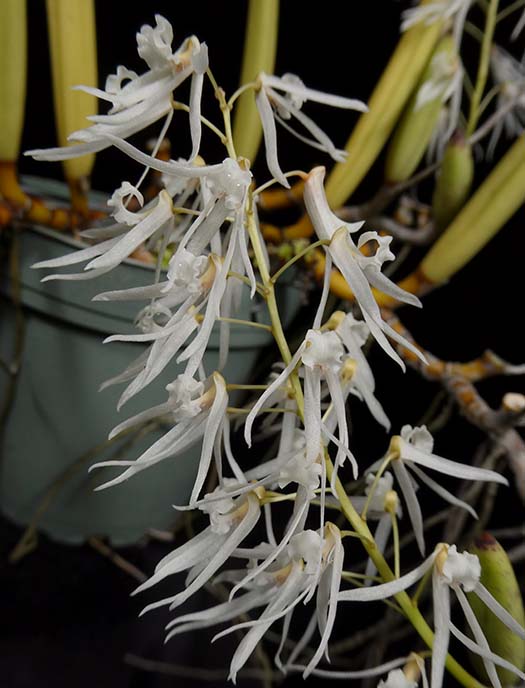
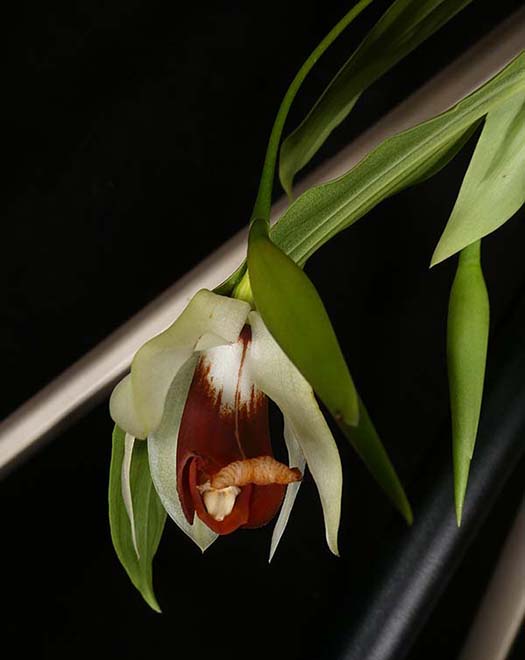 Coelogyne usitana
Coelogyne usitana